The Common Anti-Air Modular Missile (CAMM) will replace Seawolf and Rapier FSC in the Royal Navy and British Army and is described by MBDA as;
The Common Anti-air Modular Missile (CAMM) program is designed to provide the next generation of anti-air guided weapons for land, sea and airborne operations being fully compatible with existing command and control (C2) and sensors (radars etc) facilities. The new missile family is designed to engage high-speed jets, helicopters, supersonic cruise missiles and sea-skimming antiship missiles. These missiles will use low-cost components and re-use software in order to achieve a significant reduction in customer costs.
The missile is the core component of what was the Future Local Area Air Defence System (FLAADS) requirement for both land and naval environments, replacing Rapier FSC and Seawolf.
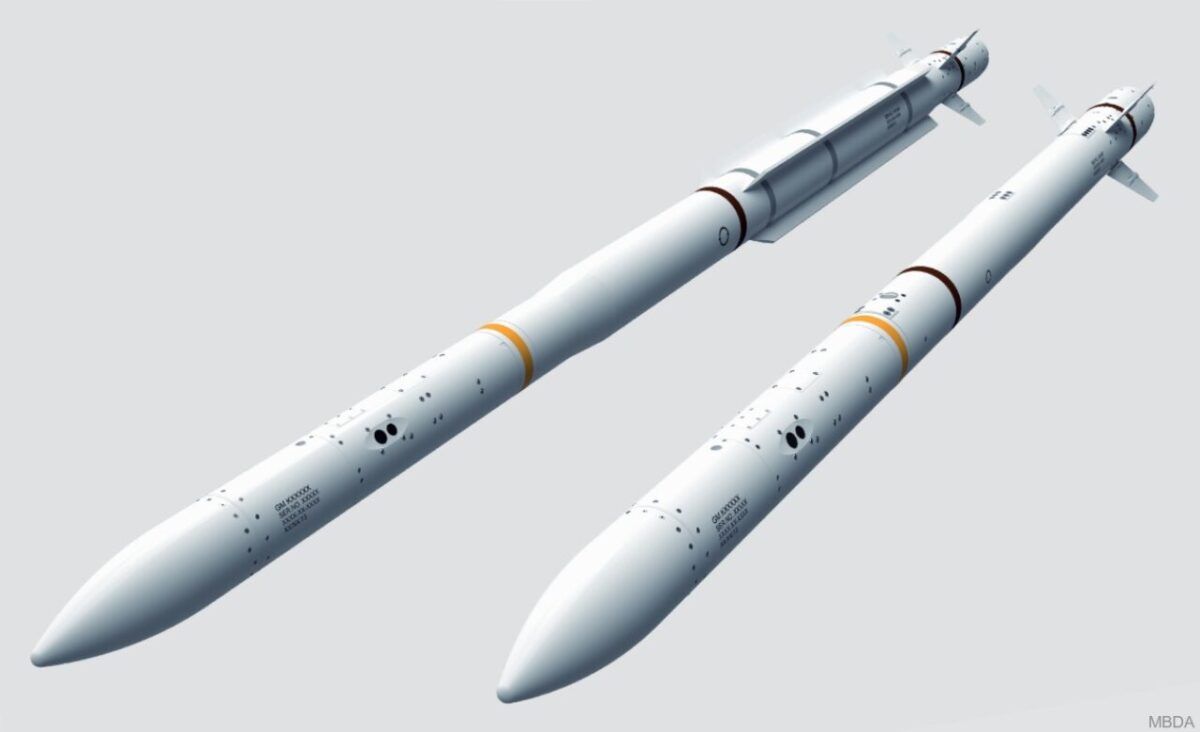
The wider systems are called Sea Ceptor and Land Ceptor/Sky Sabre.
Common Anti-Air Modular Missile (CAMM) History
The history of the Common Anti-Modular Missile really starts with the two missile systems it will be replacing, Sea Wolf and Rapier Field Standard C. Both these systems have long histories stretching back to the seventies so in the interests of keeping this page manageable I propose not to go back too far into the history of either.
Suffice it to say, both have been considerably revised and improved since first introduced in the late sixties/early seventies, but they were due for replacement in the 2018 to 2020 timeframe.
Rapier FSC
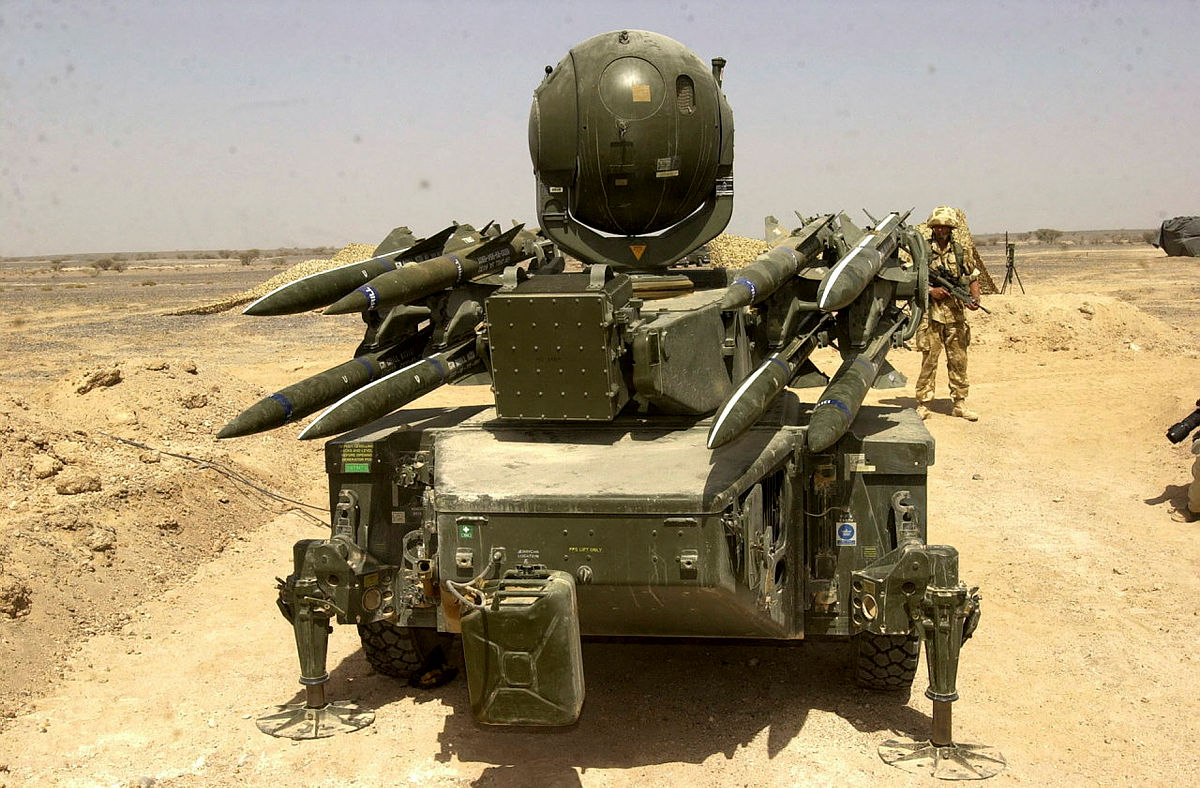
Seawolf
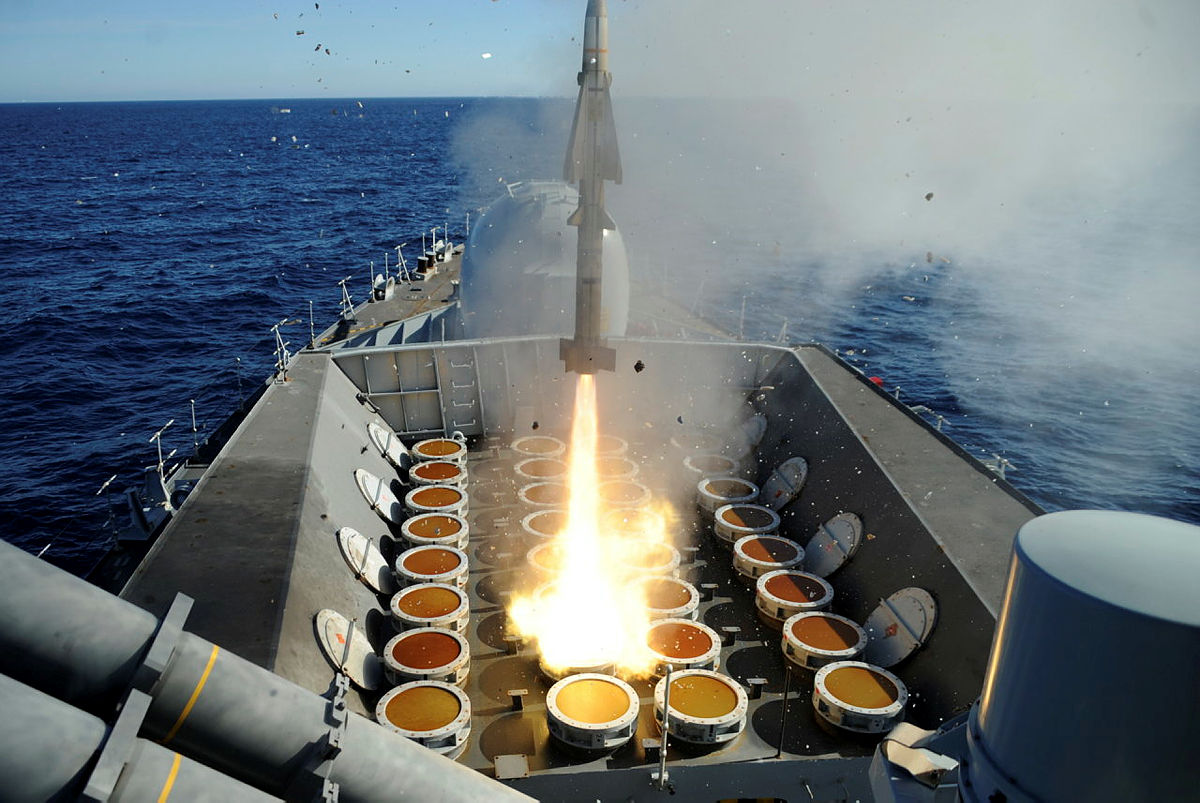
The wider system was called the Future Local Area Air Defence System (FLAADS). In the land environment, this is called Land Ceptor and in the maritime environment, imaginatively, Sea Ceptor.
The CAMM concept came from MBDA studies into a replacement for Rapier, but it soon became obvious that the Out of Service Dates for Rapier were co-terminus with those of Sea Wolf and it, therefore, became a very logical and sensible joint effort, the Future Local Area Air Defence System (FLAADS)
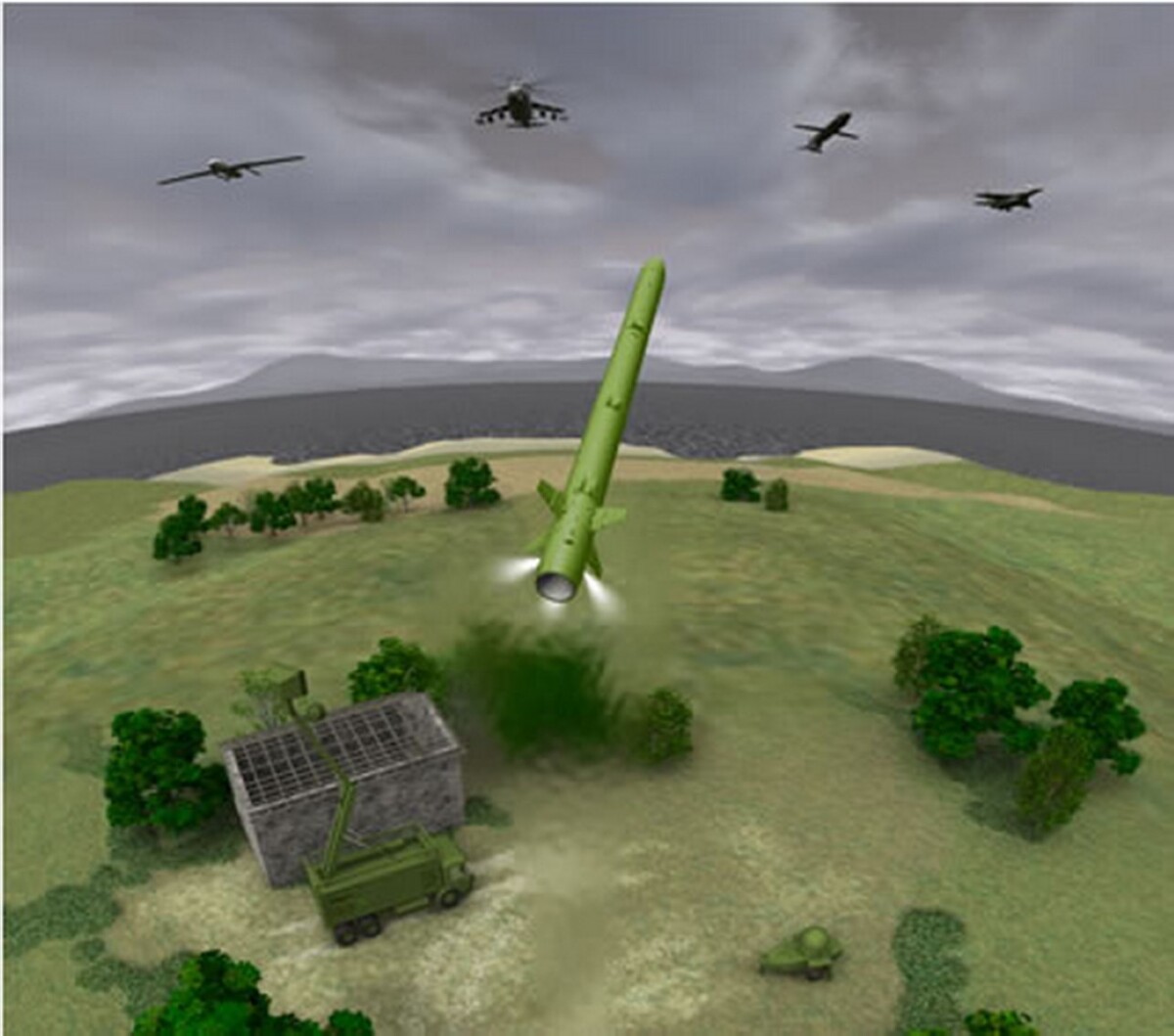
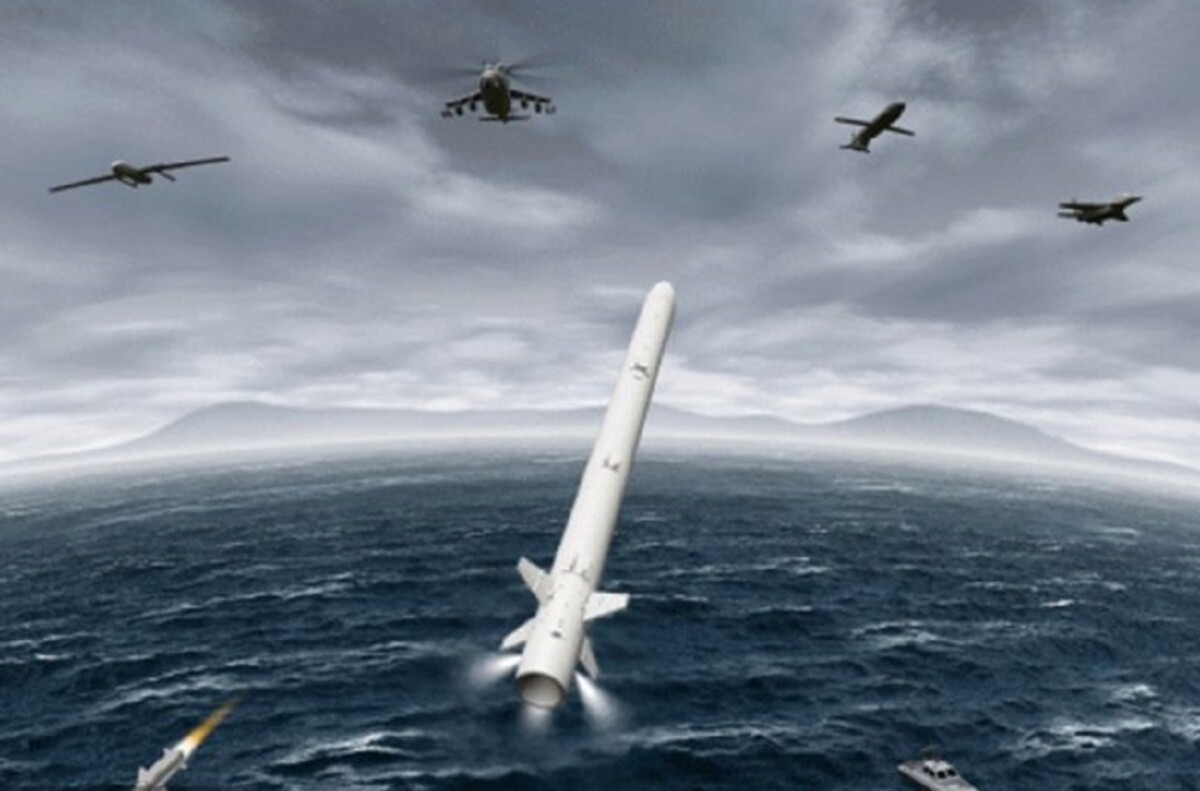
These initial studies built on the Air Superiority and Anti-Air Weapons applied research program.
In 2004, the MoD awarded an Initial Concept Phase £10m technology demonstration programme contract to MBDA through the Joint Sensor and Engagement Networks Integrated Project Team.
Phase 1 included the soft vertical launch system, dual-band two-way data link, an active RF seeker and open systems’ architecture to ensure it would be compatible with a wide range of search and acquisition radar and command and control systems.
Another £15m was committed to a second-stage Technology Development programme (TDP) to mature the RF seeker, with trials completed on a QinetiQ test aircraft.
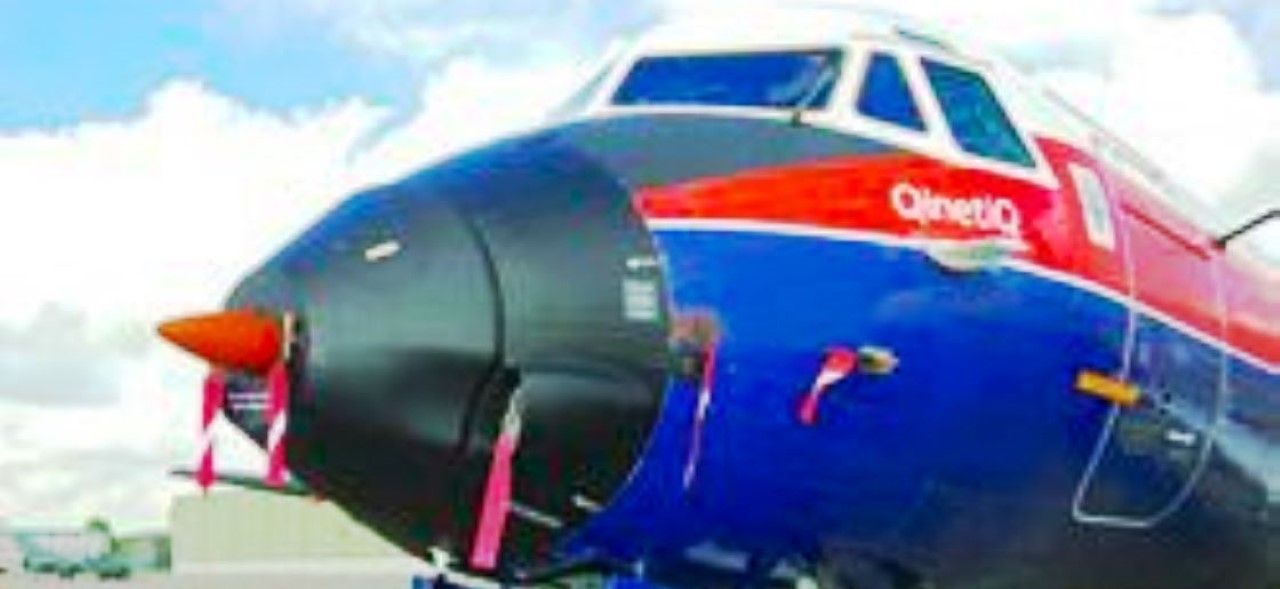
This Phase 2 contract also included several subsystems and a mid-course correction demonstration.
In 2008, the Complex Weapons Portfolio approach was announced, with FLAADS(M) one of the first systems to be completed;
The Common Anti-Air Modular Missile family to meet first the requirement for a Future Local Area Air Defence System (FLAADS) for the T23 Frigate and the Future Surface Combatant (MBDA)
Development work continued through 2011 with a fixed canister soft launch
A video was released in 2009 showing the soft launch capability of CAMM in a naval setting
Later in 2011, MBDA provided an additional update
Significant achievements are being made in all areas, notably with the development of the FLAADS Command and Control system (featuring greater than 75% re-use of Sea Viper C2 software) and the development of the FLAADS Platform Data Link, both of which are already undergoing trials in MBDA development facilities… The maturity of the CAMM missile design has been shown in a number of important trials in recent months. The novel Soft Vertical Launch concept has been conclusively proven in a number of trials, culminating in a successful ejection and turnover trial that took place on 20th May at MBDA’s Bedfordshire facility… from a truck platform, providing direct read-across to the FLAADS-L programme. Significant progress has also been made with the CAMM RF seeker development, with a series of successful air carry trials having taken place earlier this year
MBDA also released images of these first truck launches.
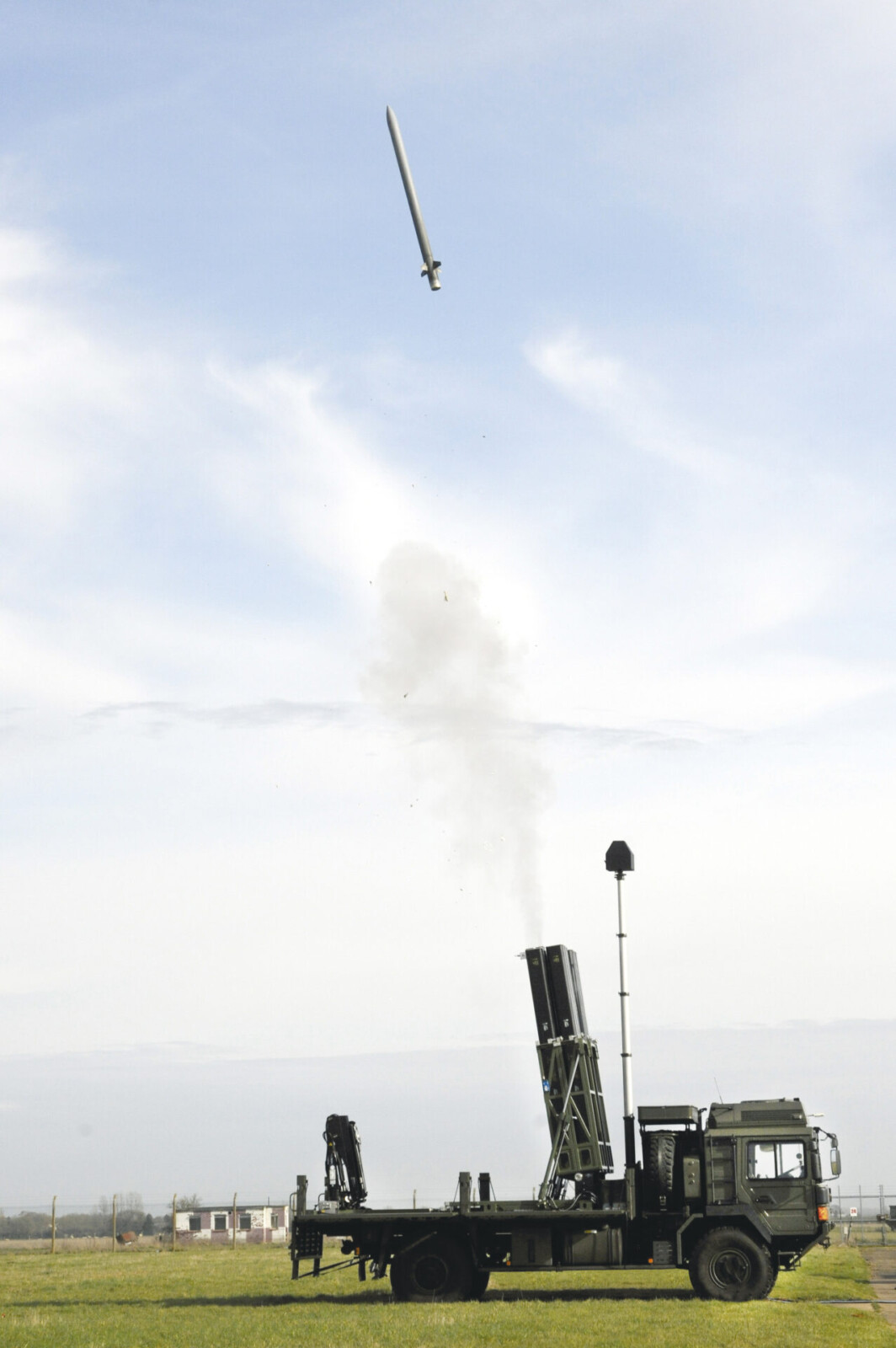
In January 2012, the MoD announced a Demonstration Phase contract with MBDA for the ‘Sea Ceptor’ system that would use the Common Anti-Air Modular Missile at its core, this final was valued at £483m.
The Minister for Defence Equipment, Support and Technology, Peter Luff, said;
The development of this missile system is a huge boost to the UK’s world-leading missile industry and once again proves our commitment to providing battle-winning technology to our Armed Forces. The introduction of this cutting-edge missile system will not only ensure that the Royal Navy will be able to continue protecting our interests wherever they may be but is also highly significant in sustaining and developing the UK’s skill in building complex weapons.
Commenting on Sea Ceptor, Chief of the naval staff and First Sea Lord Admiral, Sir George Zambellas, said;
This state-of-the-art missile system is part of an exciting renaissance in our naval equipment programme, and when fitted to Royal Navy frigates it will further enhance our global authority as a leading maritime power.
Thales announced in 2012 that they would provide the laser proximity fuze for CAMM;
MBDA’s selection of Thales UK for the delivery of this critical capability reinforces Thales’s position as a leader in the field of proximity fuzing and as the UK Ministry of Defence’s sovereign provider under Team Complex Weapons.
MBDA and Lockheed Martin announced in 2013 that they had signed an agreement to cooperate on the Ml41 ExLS VLS insert, leading with CAMM.
The same year, a CAMM missile was successfully launched from one.
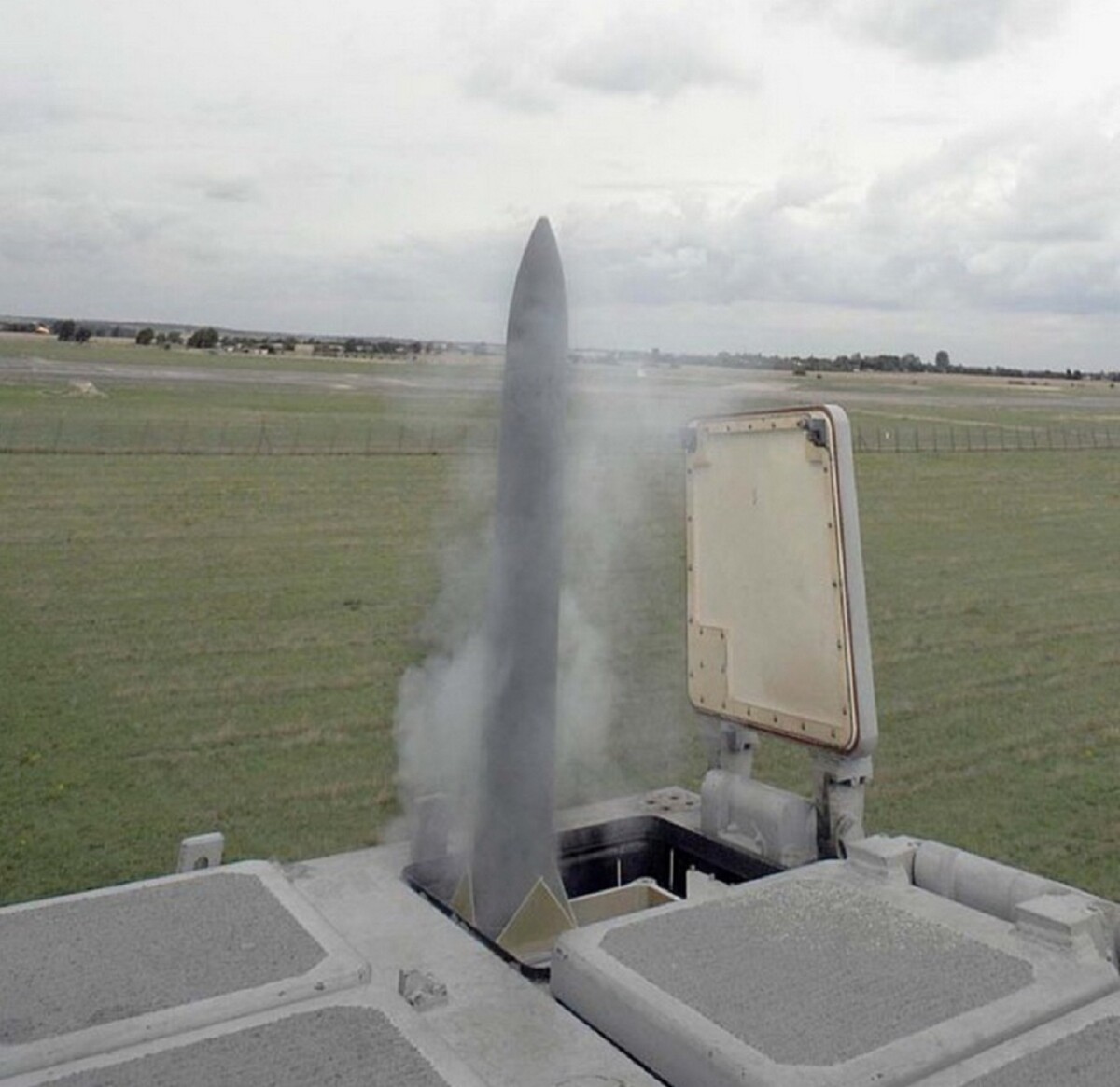
The £36 million FLAADS(L) Assessment Phase Contract was placed in 2014. The Demonstration and Manufacture phase contract, worth £228 million, was placed with MBDA in 2015.
A contract was signed between MBDA and New Zealand for CAMM, New Zealand to become the first export customer.
Additional imagery of the land launcher systems was released.
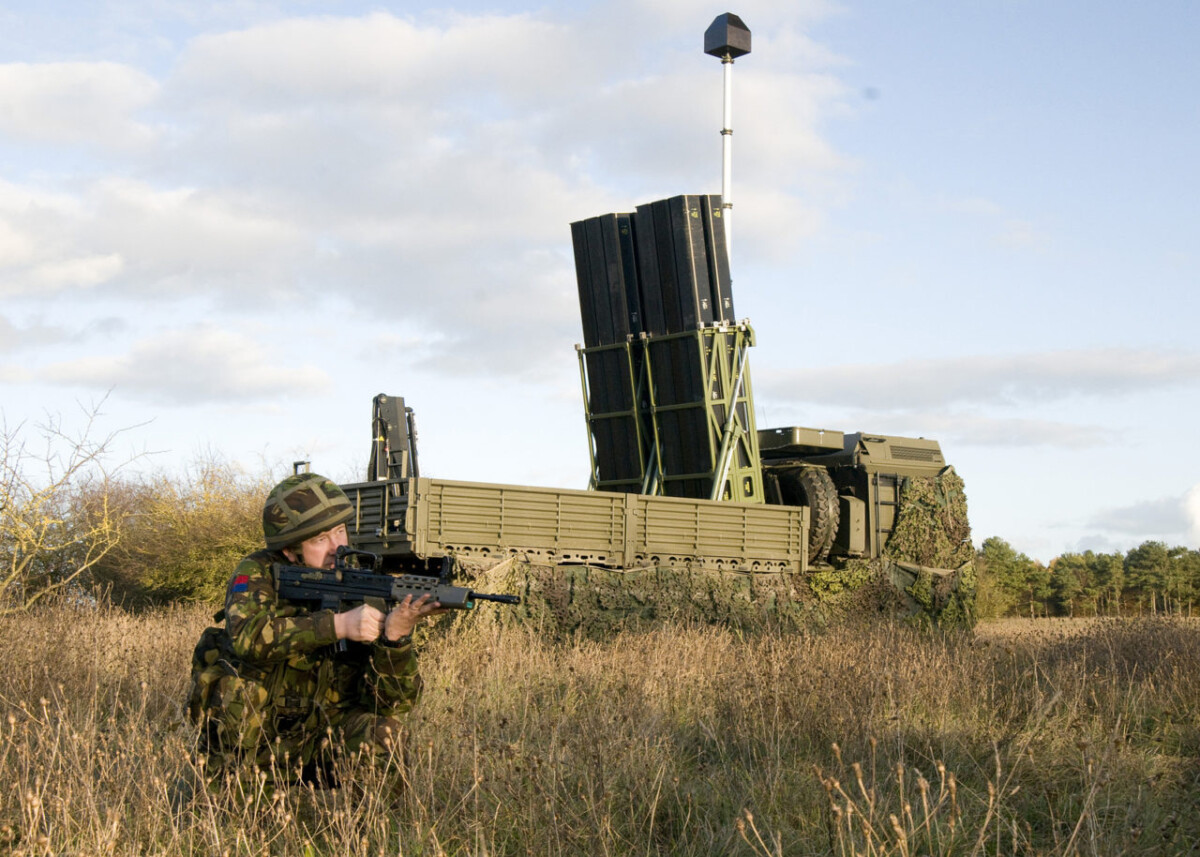
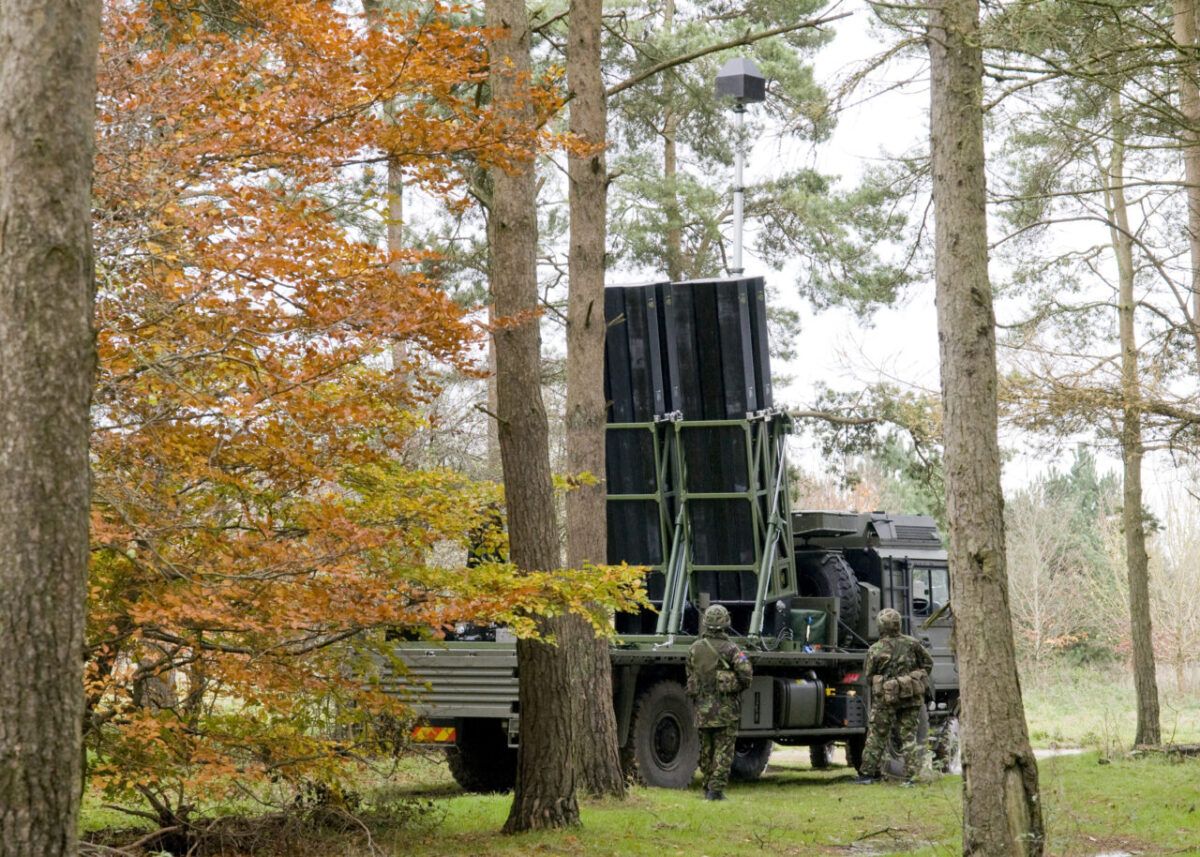
And video
Additional test firing was completed in 2014 and final qualification firings for CAMM were conducted in 2015 at the Vidsel range in Sweden.
A contract was advertised in February 2015 for the Command, Control, Computing, and Communication Systems for the ground-based air defence system;
The requirement is to deliver a Ground Based Air Defence (GBAD) capability along with an initial support solution for up to 5 years. This will include delivery of Battle Management Command, Control, Communications, Computers and Intelligence (BMC4I) functionality, integrated with networked Land-Ceptor Launchers into a primary Fire Control Centre (FCC) which will centrally Command and Control missile engagements within the context of a wider Air Defence Command and Control (C2) Battle Management (ADBM) environment. An alternate FCC with medium mobility and capable of operating independently, will also be required in the event that the primary FCC/Control and Reporting Centre (CRC) are disabled. The BMC4I provider will be responsible for delivering and supporting the alternate FCC including vehicles and mobility requirement. The BMC4I provider will be the key systems integrator of the capability including provision of communications links and integration with existing in-service communications infrastructure, as required whilst conforming to MoD rules on communications infrastructure provision. It is expected that, given the time-frames to Initial Operating Capability (IOC), the BMC4I system will be relatively mature and within the provider’s range of existing products. The BMC4I provider will be required to demonstrate the extensibility of the system from the specific operational application here to enabling the development of a contingent BMC4I system with further investment in mobility, communications and hardening. Value £100m to £250m
Even before it formally entered service, Sea Ceptor achieved some measure of export success with Brazil and New Zealand being the first two export customers. Chile later down-selected Sea Ceptor for its three Type 23 Frigates with the contract coming a few years later.
The first of class fit for the Royal Navy was reported to be the Type 23 Frigate, HMS Argyll with sea trials expected to commence in 2017.
In November 2016, MBDA was awarded a £100m Demonstration and Manufacture contract for Sea Ceptor on the Type 26 Frigate.
BDA has been awarded a £100M Demonstration and Manufacture contract by the UK Ministry of Defence (MOD) for the Sea Ceptor air defence system for the UK Royal Navy’s (RN) new class of frigate, the Type 26 (T26) Global Combat Ship (GCS). This advanced missile system will provide the principal air defence of the T26 and nearby ships against advanced airborne threats including sea-skimming anti-ship missiles, fast jets, helicopters, and UAVS.
The contract is further evidence of the confidence placed in the capability and maturity of the Sea Ceptor system and its CAMM (Common Anti-air Modular Missile) munition by the UK MOD and the RN. This Demonstration and Manufacture contract will run for 10 years and involves support to the T26 design as well as the manufacture of the electronics equipment required for the class of eight ships.
Welcoming the contract announcement, James Allibone MBDA’s UK Sales & Business Development Director said: “This investment in the Sea Ceptor system is going to give the Royal Navy and partner navies outstanding air defence cover. Thanks to the Portfolio Management Agreement with the UK MOD, MBDA is providing a common missile system for both naval and land use thereby significantly reducing the cost that would have been involved in developing separate systems”.
With Sea Ceptor now selected for five different naval platform types around the world, MBDA sees further potential for the system and the CAMM family of missiles with other navies. Dave Armstrong, MBDA Executive Group Director Sales & Business Development and UK Managing Director states: “Naval air defence is more critical than ever given the growing capability of airborne threats. CAMM’s operational flexibility and ease of integration, both as a retrofit or on a new build, combine to offer unrivalled product advantages. Customers appreciate that they are looking at a product which is at the very start of its lifecycle, a product that represents the very latest in air defence technology and one that will be supported with ongoing through life enhancements for at least the next thirty years or more”.
On the 24th of February 2017, Janes reported that Rafael had been selected by the MoD to deliver components of the Sky Sabre system, as advertised above. Other bidders reportedly included MBDA, Lockheed Martin, Northrop Grumman, Thales and Saab.
The Sky Sabre system as a whole was subject to £148 million on contracts;
- £78 million to Rafael and Babcock for the Modular, Integrated C4I Air & Missile Defense System (MIC4AD)
- £31 million to MBDA for Land Ceptor integration
- £8 million to SAAB for Giraffe integration
- £31 million to MBDA for additional Land Ceptor launchers and UK training facilities
The contracts were set to be completed by 2020.
There was some speculation in the press and surprise that the UK had placed such a sensitive system order with an Israeli company, especially as that company has a competing system with CAMM and Land Ceptor. Although this tranche of contracts is specific to the Falkland Islands, it will provide a capability that will be utilised as Land Ceptor/Sky Sabre eventually replaces Rapier FSC in the British Army.
The Rafael software is for command and control, a development of the MPREST system.
The planned first test launch of CAMM from a Royal Navy Type 23 frigate took place in September 2017.
In April 2017, the MoD and MBDA announced an additional £323 million contract
The next-generation Common Anti-air Modular Missile (CAMM) is designed for use both at sea and on land. It has the capability to defend against anti-ship cruise missiles, aircraft and other highly sophisticated threats. Designed and manufactured by MBDA in the UK, CAMM will be deployed using the Sea Ceptor and Land Ceptor weapon systems that will protect the Royal Navy’s Type 23 and future Type 26 warships, as well as enhancing the British Army’s Ground Based Air Defence system.
Sea Ceptor and Land Ceptor use innovative radar and datalink technology to guide the CAMM with incredible accuracy. CAMM’s associated radar system tracks the maritime or land based threat and uses the datalink to update the missile with the location of the threat. The CAMM’s own active radar seeker can then take over the missile guidance. The missiles are designed to provide 360 degree coverage and high degrees of manoeuvrability.
The Sea Ceptor weapon system incorporating CAMM will replace the Sea Wolf weapon system on the Type 23 Frigate and provide the anti-air defence capability on the new Type 26 frigates for the Royal Navy. Similarly, the Land Ceptor weapon system will replace the Rapier weapon system in service with the British Army and contribute technology to the replacement of ASRAAM in service with the Royal Air Force.
Adjacent to the CAMM programme, but integrated with it, the MoD also issued a contract notice for the £75m purchase of the Giraffe radar system that would form part of the Land Ceptor capability.
Joint Sensors and Engagement Networks Team, part of the UK Ministry of Defence, intends to amend Contracts JSENS/00114 and JSENS/00125 with SAAB AB (publ) (the ‘Contractor’) for the procurement of additional emulators, the modification of communications equipment and the provision of related specialist support for the Giraffe-Agile Multi Beam Radar (G-AMB) Initial Operating Capability (IOC) project to support the UK Ministry of Defence’s Ground Based Air Defence (GBAD) IOC programme.
Italy also joined the CAMM programme in 2017, to replace their Aspide/Spada missiles. The CAMM-ER, or extended range, missile will be used by Italy.
Second firing trials
MoD statement on the first test firings
The first firings of the new Sea Ceptor air defence system have been successfully conducted in a major milestone for the Royal Navy, Defence Minister Harriett Baldwin announced today. The Minister visited defence company MBDA’s site in Filton, near Bristol, meeting with local graduates, apprentices and other employees working on the Sea Ceptor system. The new air missile defence system can intercept and destroy enemy missiles travelling at supersonic speeds and will form part of the protection for the nation’s new aircraft carriers. The first firings were conducted from Type 23 frigate HMS Argyll whilst off the coast of Scotland.
Sea Ceptor will protect our interests against threats both known and unknown. It will launch from the Royal Navy’s new Type 26 frigates as they keep our nuclear deterrent submarines and the UK’s two new aircraft carriers safe on operations around the globe. Sea Ceptor supports 600 UK jobs and is yet another example of how our rising defence budget is being spent on cutting-edge kit to help our Armed Forces meet future threats.
In the same month, MBDA revealed the final configuration for Land Ceptor, the launch vehicle
A CAMM user group was also established as the final test firing was completed in December 2017.
The Royal Navy has successfully conducted the final First of Class firing trials of the new Sea Ceptor air defence system – completing the qualification firings of this cutting-edge new capability for the Royal Navy. Following on from the first round of trials this summer, the second set of trials from HMS Argyll saw the system tested against more complex scenarios, including rapidly engaging multiple simultaneous threats. With HMS Argyll having completed development testing of Sea Ceptor, the weapon system is now being rolled out to the Royal Navy’s other Type 23 Frigates. The first of a series of installation test firings has been successfully completed on HMS Westminster. Each Sea Ceptor platform will similarly complete an installation test firing in due course as they prepare to re-join frontline service after their refits.
In February 2018, the British Army described how Sky Sabre would come into service in 2020.
Sky Sabre is due in service in 2020 and will prove to be a step change in the UK’s air defences, taking it from short to medium range capability. Simply put that means being able to hit an enemy target that much further out, way beyond visual range. This was the first time that the three principal components of the system had come together; the MBDA launcher that fires the CAMM missile, the Saab radar targeting system, aptly named the giraffe because of its extending neck and the command and the Rafael control electronics suite from which the system is operated.
Sky Sabre is the name of the overall system, first firing video is below.
The first tranche of Sky Sabre air defence systems was received by the British Army later in 2018.
After further qualification and trials work, in May 2018, CAMM formally entered service with the Royal Navy
A world-class missile system that will protect the Royal Navy’s new aircraft carriers has officially entered service, Defence Secretary Gavin Williamson has announced today. Sea Ceptor provides a powerful shield against airborne threats, including hostile combat jets, helicopters and other missiles, and has been developed and manufactured through Ministry of Defence contracts worth around £850m. It will be carried by the Royal Navy’s Type 23 frigates, and has been successfully demonstrated through a trials and test firing campaign that started last year. Most recently, Plymouth-based HMS Montrose became the third ship to test fire the system.
The Secretary of State for Defence visited the MBDA factory to examine CAMM in production.
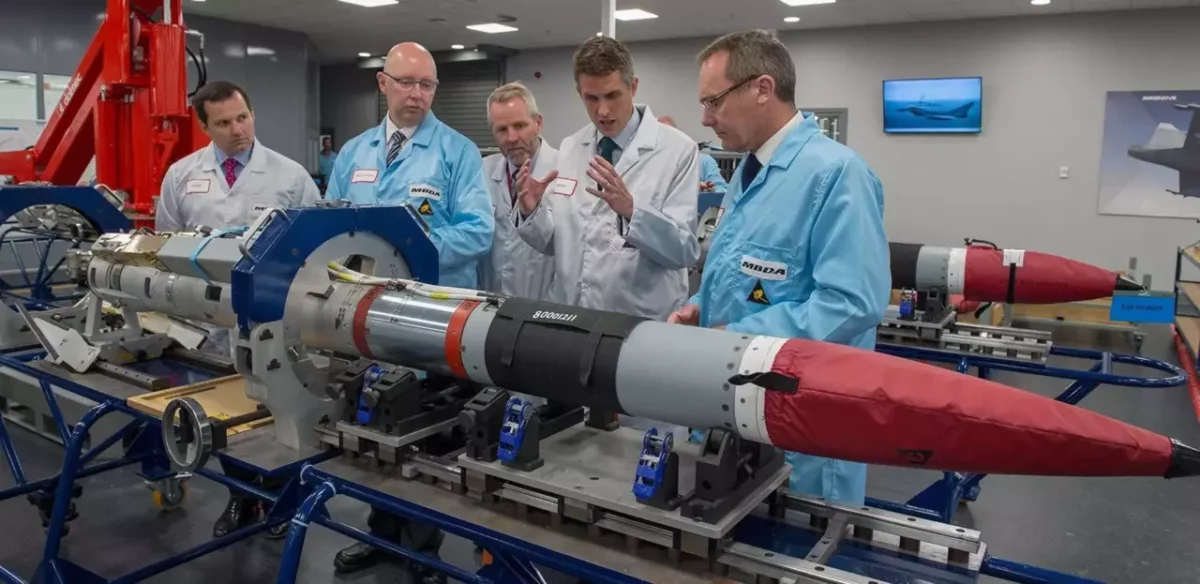
MBDA and Lockheed Martin completed a test firing of CAMM from a 3-cell ExLS in a Mk41 VLS
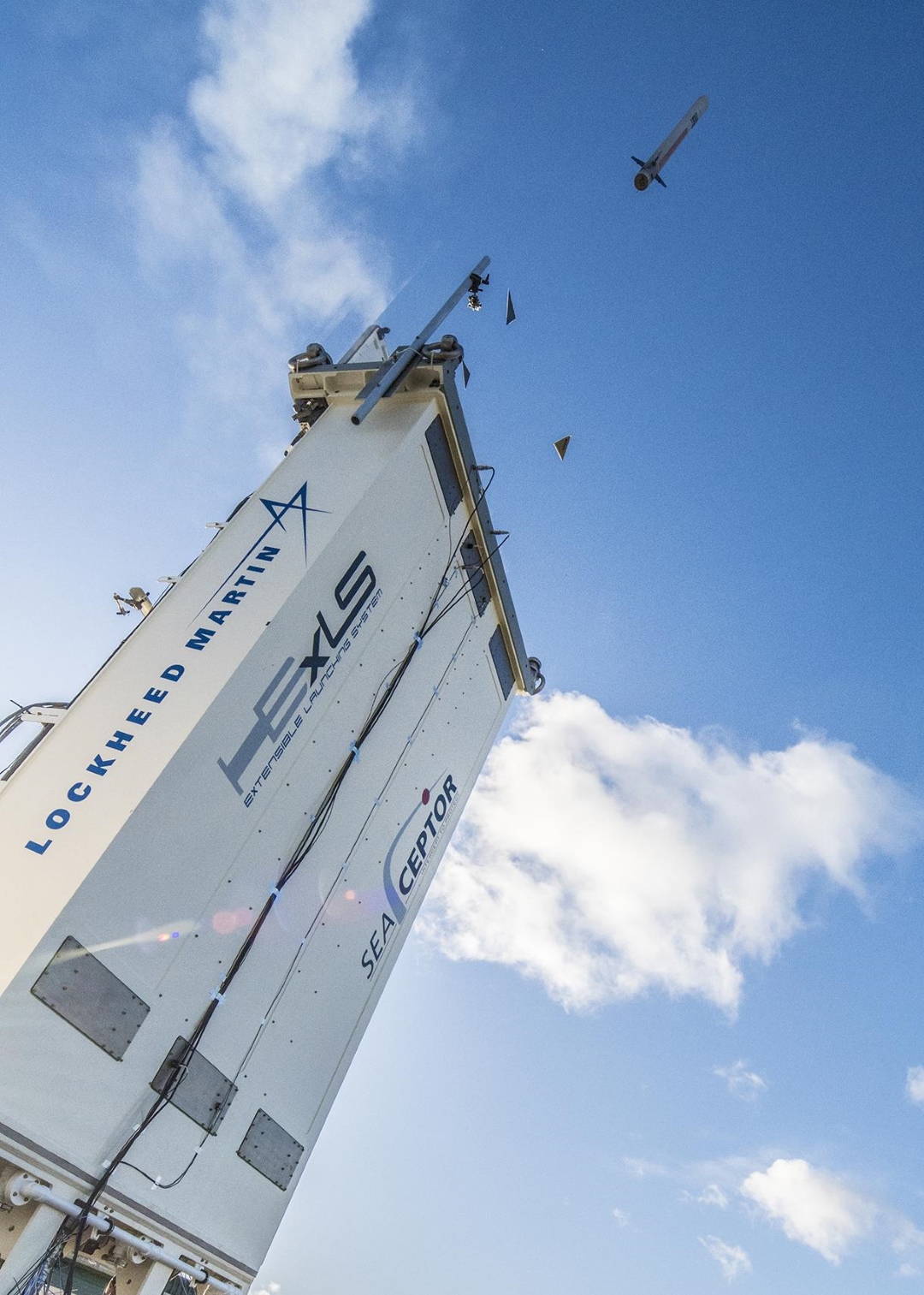
In October 2018, Janes reported more progress on CAMM-ER
On 1 October, the Italian government’s ministerial act on the financing of the multiyear program for the development and acquisition of the Common Anti-Air Modular Missile-Extended Range (CAMM-ER) and related air defense systems (command and control and sensors) was withdrawn, delaying or even jeopardising the programme. In September, the programme, launched in 2011 and already funded by the previous government’s 2017 budget, was submitted to the parliamentary defense and finance committees for final evaluation and parliamentary approval. According to the Chamber of Deputies website, the deadline for discussing the act was 1 October for the finance committee and 21 October for the defense committee.
MBDA successfully completed a series of trials of the ER variant in 2020
The final live firing exercise for Rapier was completed in 2020
Poland selected CAMM in 2021 for the NAREW programme, MBDA commenting;
MBDA is delighted to be playing such a leading role in the UK-Poland Defence partnership. This agreement endorses the deep relationship we have formed with Poland’s Ministry of National Defence and Polish Industry and is underpinned by the nature of our unprecedented technology cooperation and transfer proposal for NAREW and Polish Air Defence. In choosing MBDA, and the CAMM family, Poland will receive the benefits of a true European missile partnership, the latest capabilities, and the ability to secure and develop highly skilled jobs in its defence industry. We thank Poland for the trust placed in us and we look forward to delivering this programme in cooperation with PGZ.
The ER variant continued its development in 2021
In 2021, the MoD announced a £500m contract for the Mid-Life Refresh of the Aster missiles and the integration of the Common Anti-Air Modular Missile (CAMM) into the Sea Viper combat system.
MBDA UK has been awarded an 11-year contract to integrate the Common Anti Air Modular Missile (CAMM) into the Type 45 destroyer’s Sea Viper weapon system. In addition to this, a 10-year contract with Eurosam will provide an Aster Mid-Life Refresh (MLR) programme of work to missiles that the Type 45 destroyers currently use. To facilitate the introduction of CAMM to the vessels, a new 24-missile CAMM silo will be added in front of the current 48-missile Aster 30 silos, therefore increasing the overall missile capacity of the vessels by 50% with a total capacity of 72 anti-air missiles per destroyer. CAMM also provides a means to accurately and effectively engage small, fast inshore attack craft, hovering helicopters and low-speed targets alongside defeating their more traditional high-speed air targets.
The Aster 30 missile system refresh is a tri-national sustainment and enhancement contract between the UK, France and Italy which includes investment in a dedicated UK embodiment facility at Defence Munitions in Gosport, Hampshire. The first Type 45 destroyer is expected to have been overhauled by summer 2026. SV-CAMM is planned to achieve Initial Operating Capability (IOC) in early 2027 with the whole fleet rollout complete by the end of 2032.
Sky Sabre was deployed to Poland in 2022
The United Kingdom has announced it is sending another powerfully reassuring signal to our NATO partners of the capabilities that can be brought to bear, should they ever be threatened by an aggressive neighbour, especially in this time of heightened anxiety following the Kremlin’s assault on Ukraine, just across the border.
In 2022, the MoD issued a Prior Information Notice for Land Ground-Based Air Defence (Land GBAD)
The Land GBAD Programme has been established in response to Army’s requirement for a fully integrated Air Defence system of systems. This is a Category A Government Major Project Portfolio (GMPP) programme. This will be an enduring capability that will be delivered through incremental capability uplifts over the next 10 years. The identified Single Statement of User Need (SSUN) for Land GBAD is stated as:
“Land GBAD must provide sufficient, effective capability to warn, inform, deter and defeat all air threats (including aircraft, missiles, munitions, and UAS), in order to prevent adversary interference from the air inhibiting Joint Force freedom of manoeuvre. Land GBAD will provide lethal and non-lethal defeat mechanisms and minimise the risk it presents to friendly and neutral air users. It will be deployable on multi-domain operations, integrated, scalable up to divisional level, and in joint and multi-national operations to Protect, Engage, Constrain and Fight”.
Identified capabilities to be delivered and enhanced by the Land GBAD programme include:
Short-Range Air Defence (SHORAD);
Medium-Range Air Defence (M-RAD);
Counter Small Aerial Targets (C-SAT) for SHORAD and MRAD; and
All Arms Counter Small Uncrewed Aircraft Systems (All Arms C-sUAS).
These capabilities will be incrementally delivered as a multifaceted and multi-layered programme over a 10-year period. Aerial threats to be targeted range from Class 1 Unmanned Aircraft Systems (UAS) including swarms, artillery, munitions, Attack Helicopters and Fixed Wing Aircraft, with potential for larger munitions and the introduction of future novel weapons.
The Market Interest Day is a briefing from the Authority to Industry, during which the Authority will describe the requirement and incremental delivery approach. We will invite Industry comments which will be documented and shared to those present at the event.
It is expected that Sky Sabre will form the M-RAD part of this.
In May 2023, the Polish Armaments Agency awarded a contract to MBDA
MBDA has been contracted by the Polish Armament Agency to supply CAMM missiles and iLaunchers for Poland’s PILICA+ air defence upgrade programme.
In total, MBDA will provide missiles and missile launchers valued at £1.9 billion to support Poland’s modernisation and manufacture of a total of 22 PILICA+ air defence batteries – making it the largest European short-range air defence acquisition programme in NATO.
Designed by PGZ, PILICA+ will combine MBDA’s CAMM short-range radar-guided missiles with Polish-made autocannon and very-short range infrared guided missiles into a triple-layer system commanded by a Polish command and control system and guided by Polish radars. PILICA+ will operate as the inner tier of a highly-capable integrated Polish air defence network also including the upper-tier WISLA system and mid-tier NAREW system, which MBDA is also supporting with PGZ.
The iLauncher is shown below
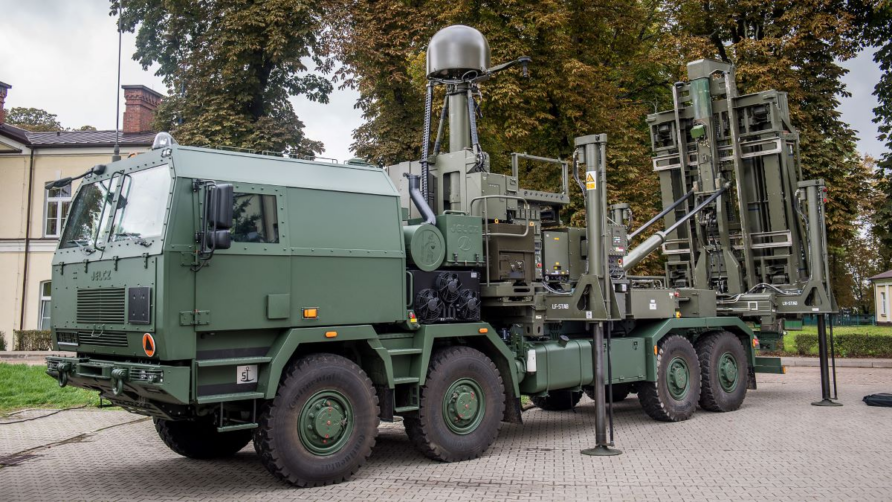
In October 2022, the UK and Poland signed a Memorandum of Understanding to develop a ‘Future Common Missile’, widely assumed to be a longer range version of CAMM.
Managing Director of MBDA UK Chris Allam said:
To deliver Small Narew to Poland in such an extremely short timeframe is a remarkable achievement, and we’re proud that this has been accomplished through our very close partnership with Polish Grupa Zbrojeniowa and thanks to strong support from the UK government. Today’s agreements launch the next step in Polish-UK missile co-operation and underpins the PGZ-MBDA technology transfer proposal on Narew, while also supporting Pilica+, Miecznik, Tank Destroyer, and other vital projects.
The Polish MoD confirmed in June 2023 that their CAMM missiles would be manufactured in Poland.
A Letter of Intent was signed by MBDA UK and PGZ (Poland) to continue the joint development of the Future Common Missile, commonly referred to as CAMM-MR.
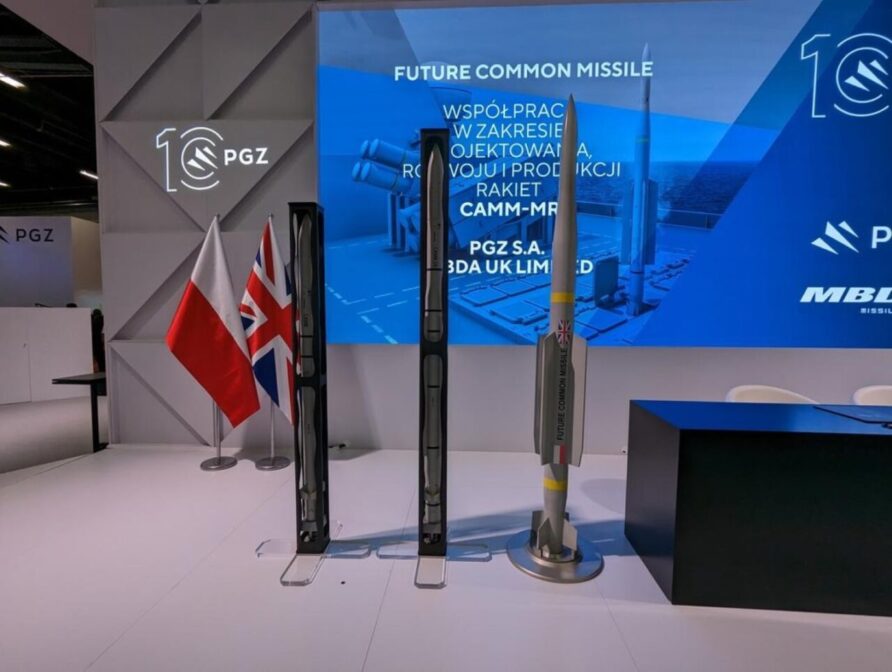
Sweden confirmed it had selected the MBDA CAMM in November 2023.
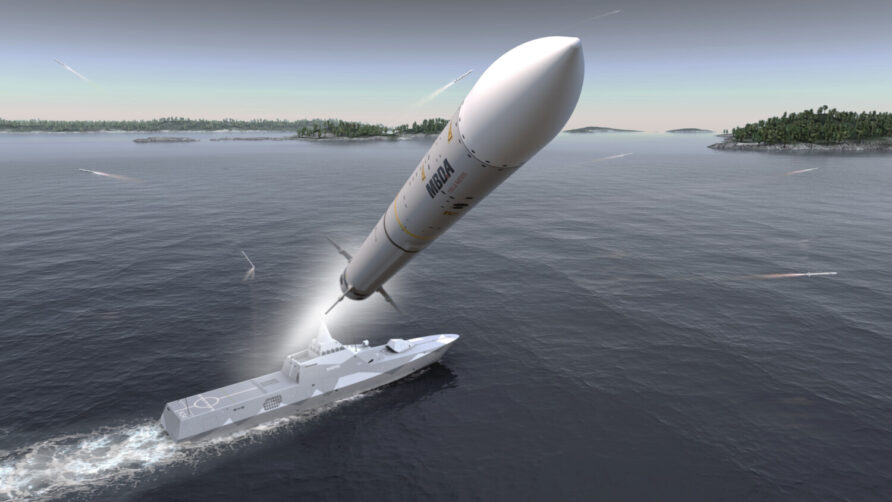
In March 2024, the HMS Richmond shot down a number of Houthi drones, the first operational use of Sea Ceptor.
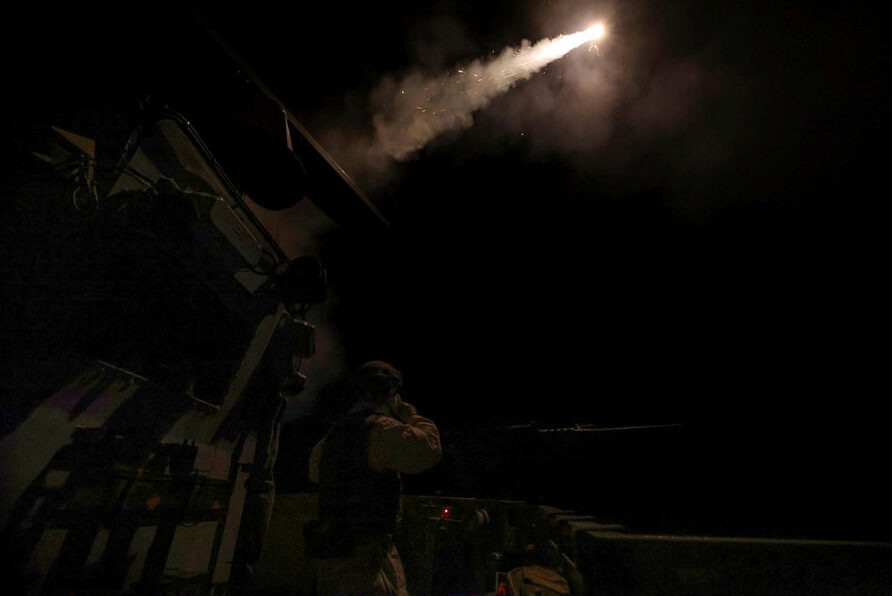
Initial work on the Polish NAREW programme was finalised in October, with a large export finance backed order.
The UK government supports the export of air defence systems and associated goods and services (the ‘NAREW Programme’) by UK and Polish defence companies MBDA UK Limited and Polska Grupa Zbrojeniowa.
The MoD awarded a small contract in 2024 to Northrop Grumman to assess their Integrated Battle Command System (IBCS) and Forward Area Air Defence (FAAD) command and control system for UK needs.
Before reading on, would you mind if I brought this to your attention?
Think Defence is a hobby, a serious hobby, but a hobby nonetheless.
I want to avoid charging for content, but hosting fees, software subscriptions and other services add up, so to help me keep the show on the road, I ask that you support the site in any way you can. It is hugely appreciated.
Advertising
You might see Google adverts depending on where you are on the site, please click one if it interests you. I know they can be annoying, but they are the one thing that returns the most.
Make a Donation
Donations can be made at a third-party site called Ko_fi.

Think Defence Merch
Everything from a Brimstone sticker to a Bailey Bridge duvet cover, pop over to the Think Defence Merchandise Store at Red Bubble.
Some might be marked as ‘mature content’ because it is a firearm!
Affiliate Links
Amazon and the occasional product link might appear in the content, you know the drill, I get a small cut if you go on to make a purchase
Common Anti-Air Modular Missile (CAMM) Capabilities
The defining characteristic of CAMM is that it is common to the land and maritime environment, and with a high degree of commonality between it and ASRAAM, although they are not the same missile.
For both land and maritime variants, the missile (CAMM or CAMM-ER) is one part of a wider system, the effector.
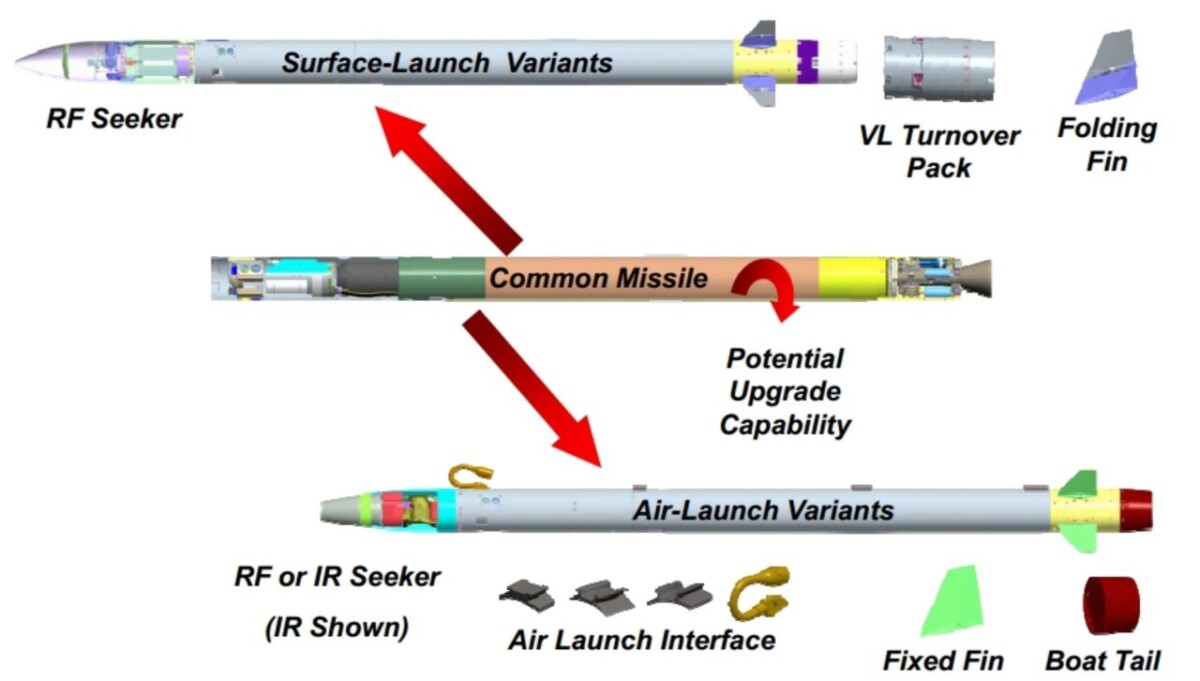
The Missile, Soft launch System and Common Data Link
Each supersonic IM-compliant CAMM weighs 100 kg, approximately 20 kg heavier than Sea Wolf and nearly double the weight of a Rapier. The length is 3.2m and the diameter is 0.16m.
The missile itself takes a great deal from ASRAAM, but it is not a surface-launched ASRAAM with a new name. Common components include the very low signature rocket motor from Roxel, the warhead and the proximity fuse from Thales.
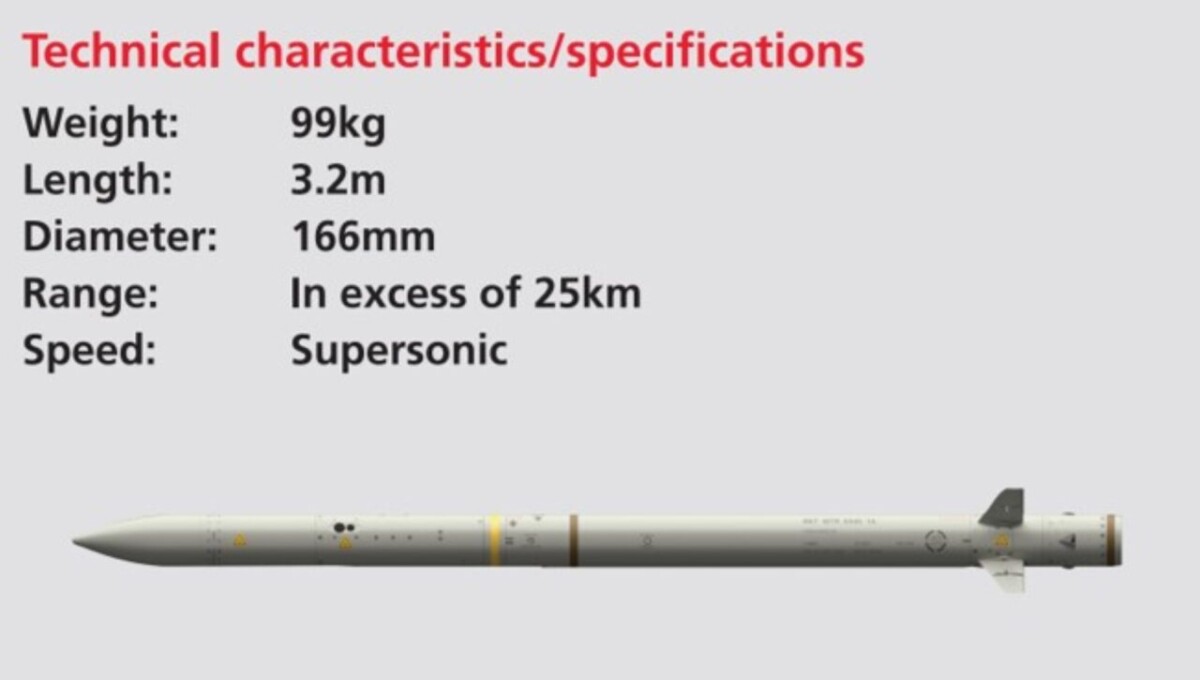
The RF seeker and open architecture electronics backbone are new, the latter is called Programmable Open Technology for Upgradable Systems or PrOTeUS and uses an IEEE 1394 FireWire bus technology as a starting point.
Although the range will, of course, be classified, MBDA declare it as ‘in excess of 25km
The soft vertical launch system ejects the missile to a height of about 30m before a small thruster fire to orientate the missile with the target location. This method is safer, removes the need to manage hot gas efflux in the launch silo, and ensures all the main rocket motor fuel is used for arriving at the target.
Silos are canted out slightly so that should the main motor fail to ignite, the missile will not fall back onto the launcher.
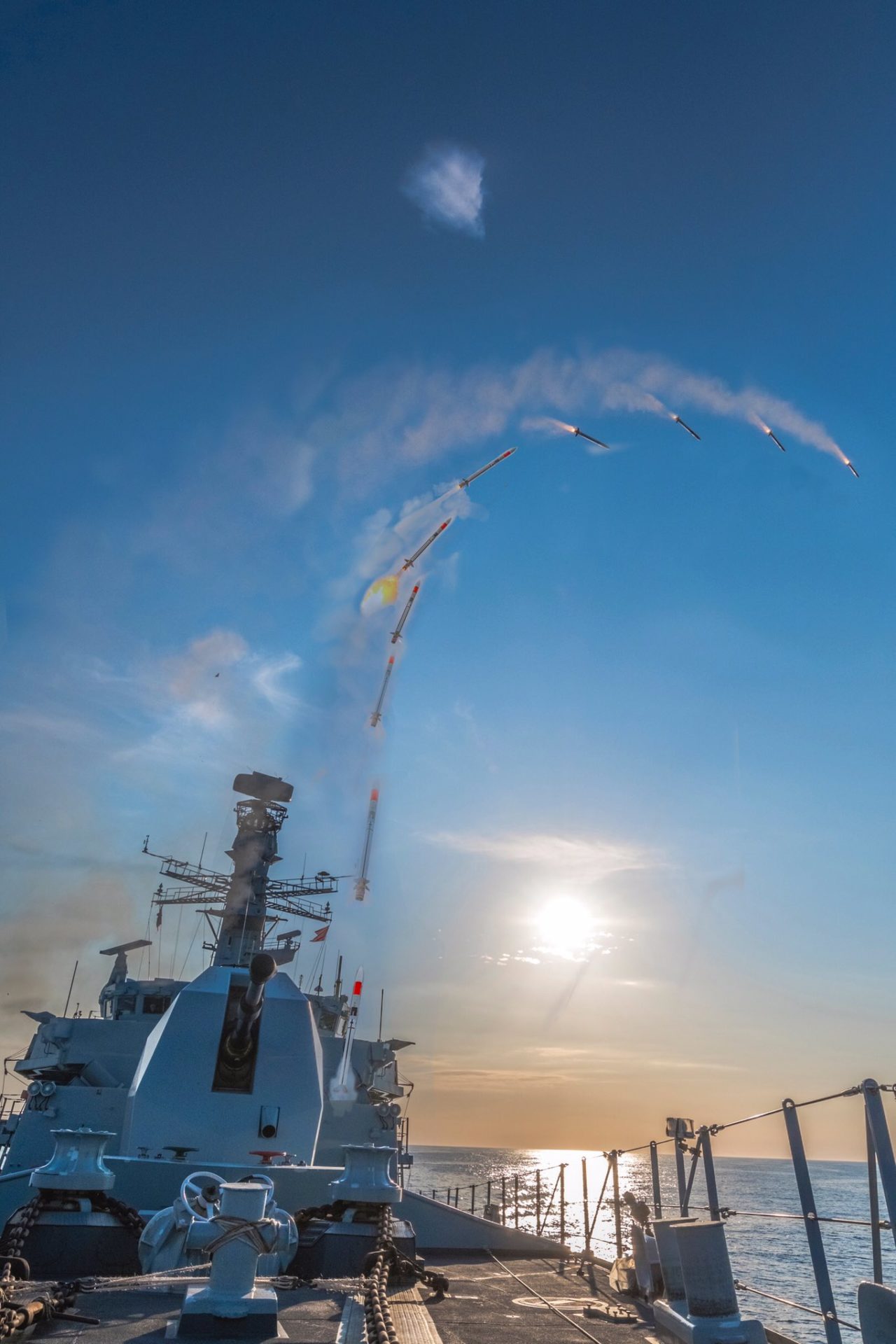
The Common Data Link (CDL) is the small ‘black box’ or dome that sits on top of the mast, especially clear in pictures of FLAADS(L) although it doesn’t necessarily have to use the two-way data link to the launch vehicle, so, it could take mid-course corrections from any number of suitably equipped land or air platforms and then switch to active homing when it gets close enough.
The original launch platform could have even moved by the time the missile hits.
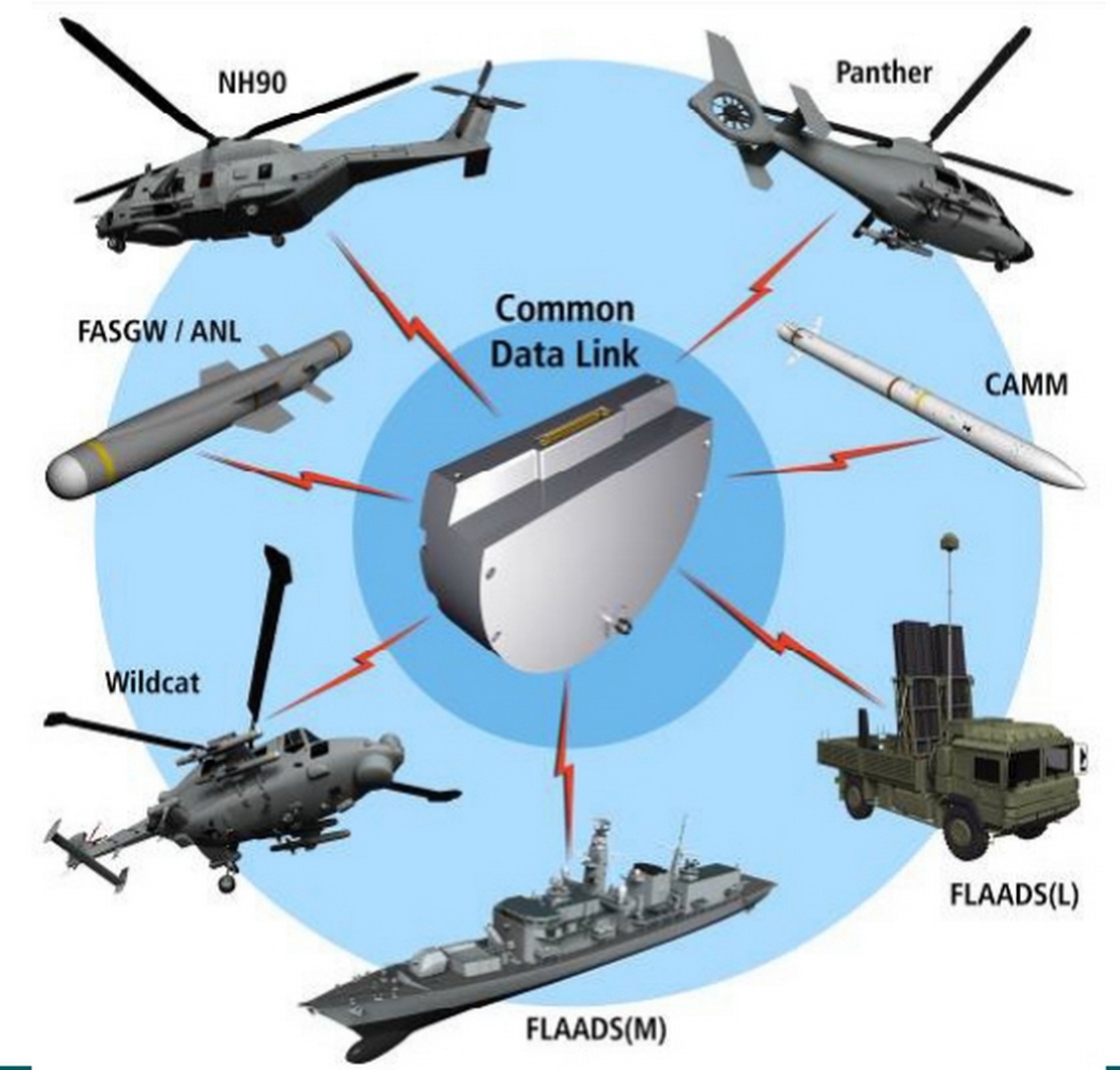
Later images show a change in the physical appearance of the data link housing.
It is reported that each missile in its sealed canister will have a shelf life of ten years.
Although MBDA/Lockheed Martin has not sold any, the ExLS remains an interesting concept.
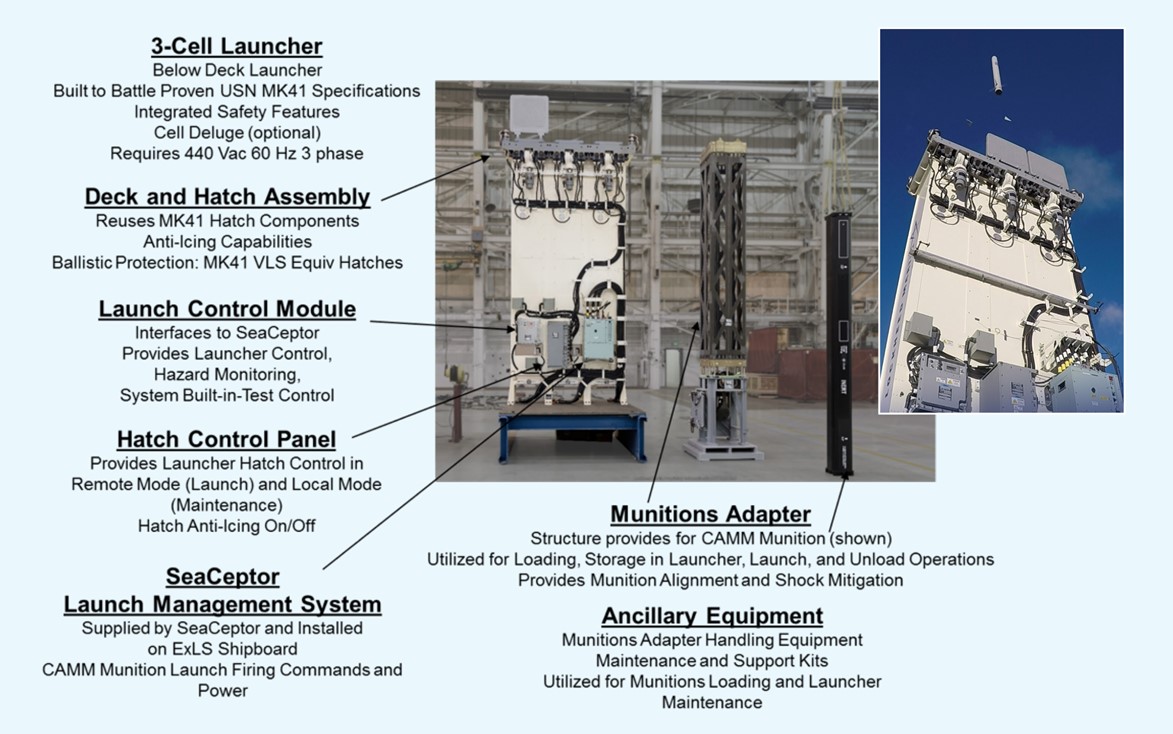
CAMM has been qualified on ExLS.
CAMM, like all complex weapons, comes in a Special to Contents Container
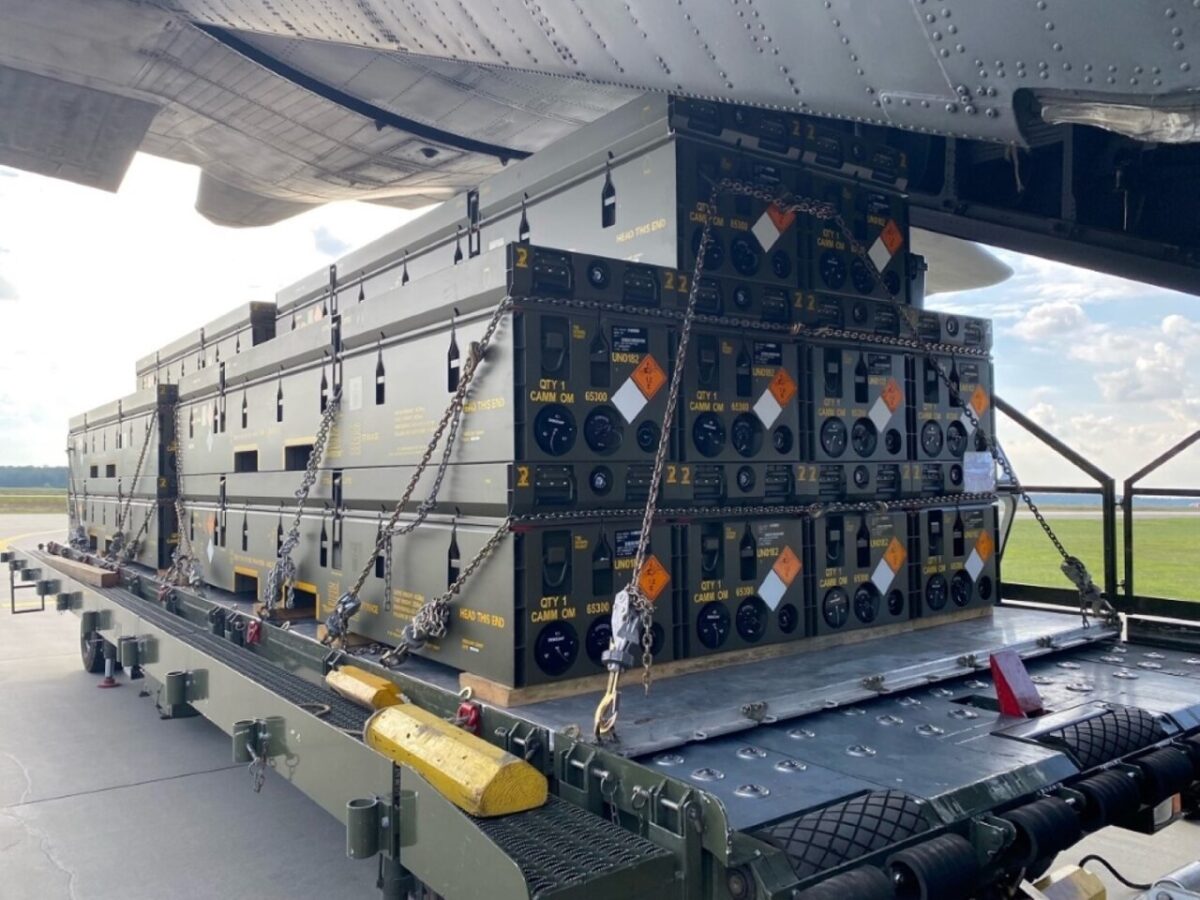
Extended Range Missile
CAMM-ER is primarily derived from a requirement for a replacement for the Italian Armed Forces SPADA and ASPIDE missiles. CAMM-ER has an enlarged body that houses an Avio motor, providing the missile with a reported range in excess of 45km.
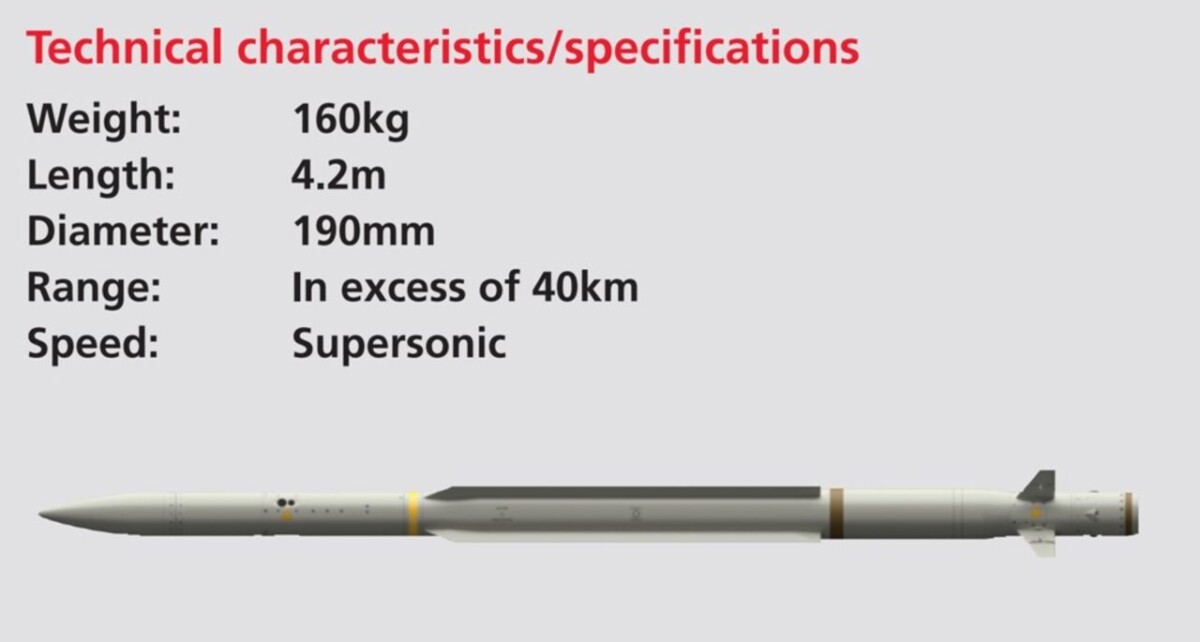
The difference between the two can be seen in the image below
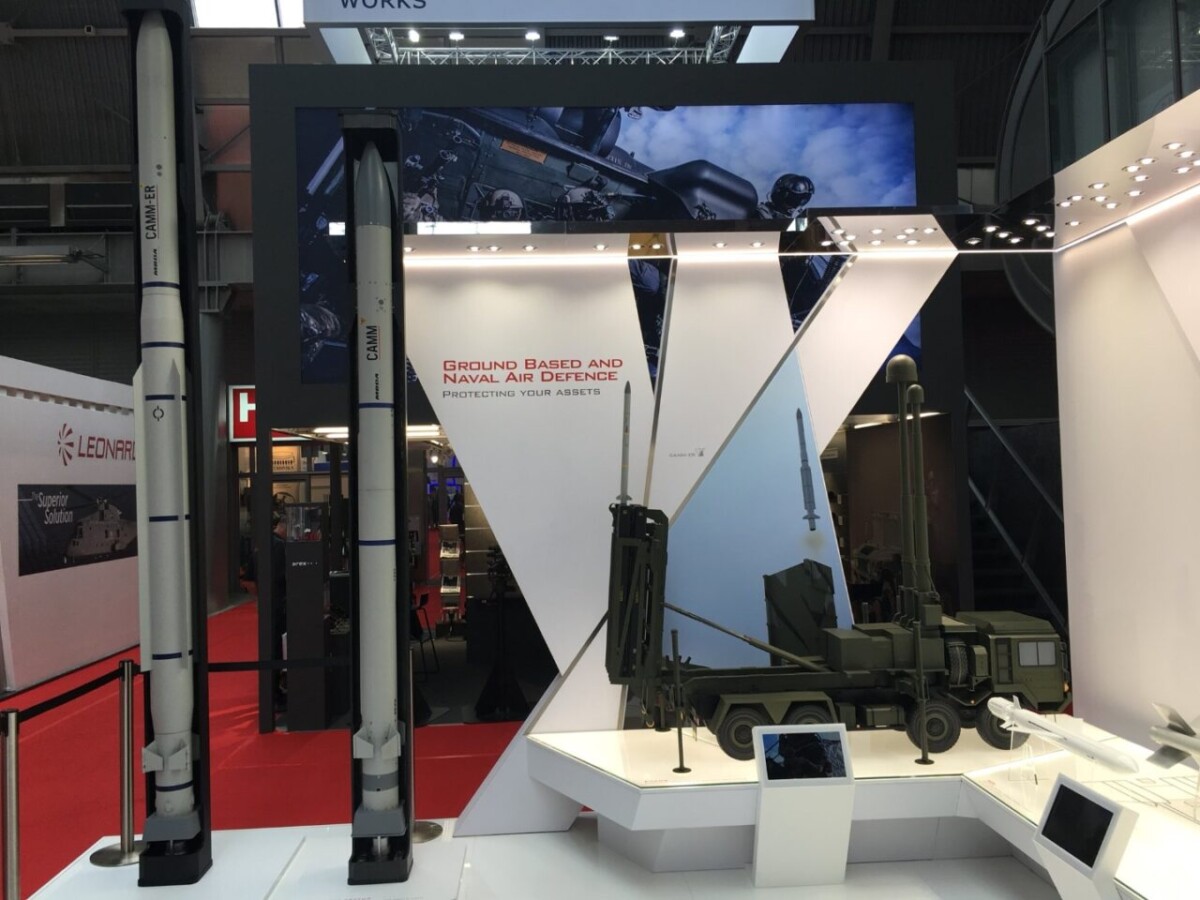
The CAMM-ER missile will be integrated within the Enhanced Modular Air Defence Solutions (EMADS) system for Italy, which is the lead customer.
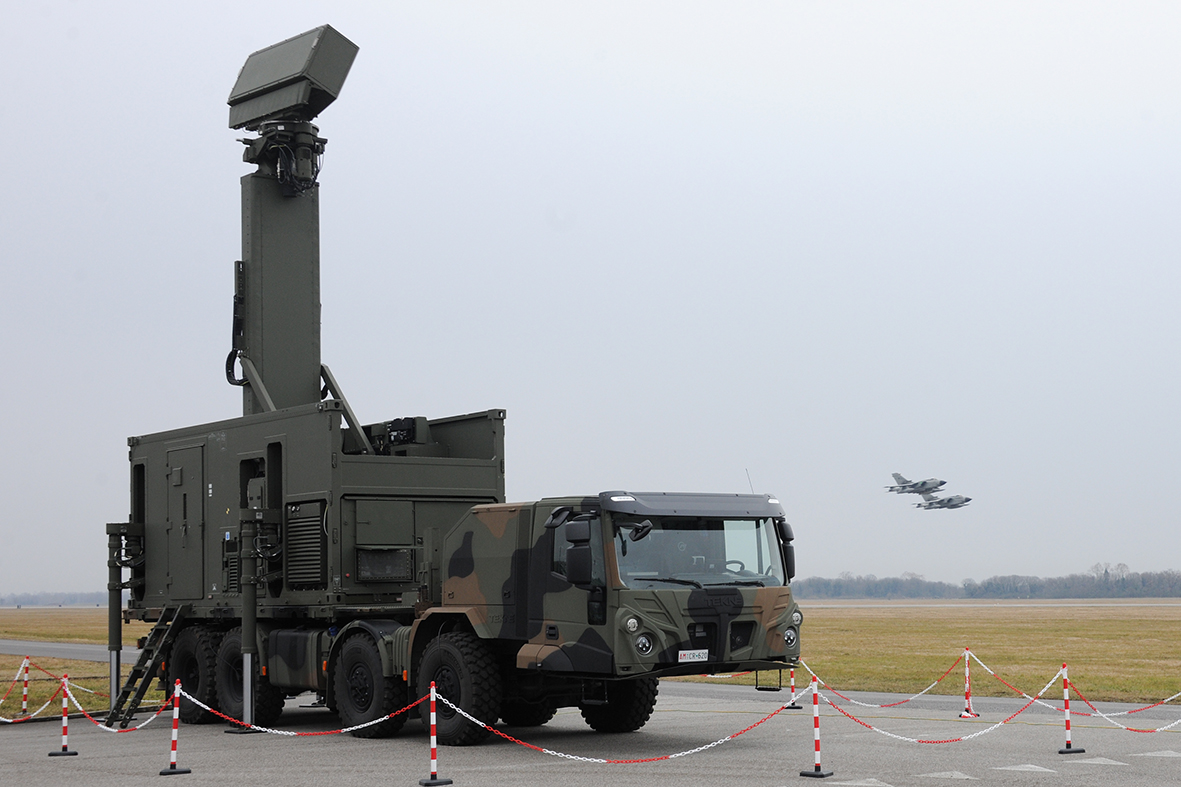
Although there has been some anecdotal evidence that the British Army will purchase CAMM-ER, there have been no official notices to date, although many have reported a mix of CAMM and CAMM-ER will be mixed within the same battery.
CAMM-Medium Range
An illustration emerged in June 2023 of the joint UK-Poland CAMM-MR development, reportedly with a 100 km+ range.
In the same way that Italy has co-funded the development of CAMM-ER (50 km), Poland is doing the same with CAMM-MR (100 km), but CAMM-MR will be a significantly larger missile, shown below, double-packed inside a Mk41 VLS.
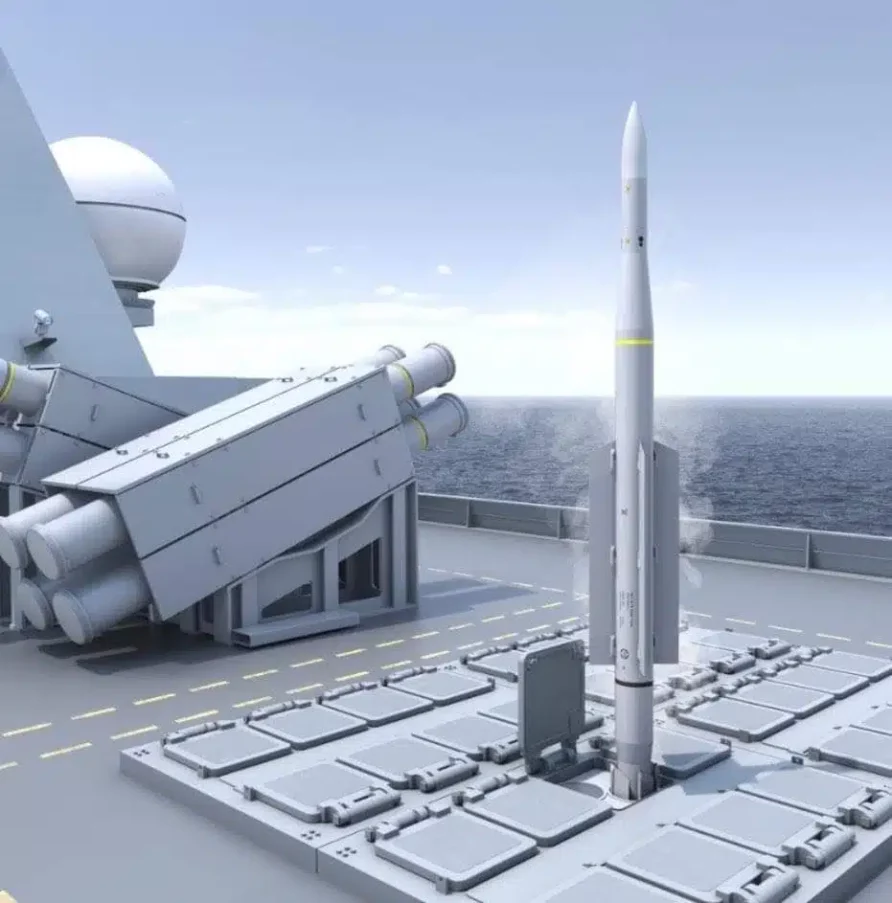
Maritime (Sea Ceptor)
In the maritime environment, the Sea Ceptor soft launch system and, particularly, connectivity with the Royal Navy’s ARTISAN radar and command and control software make integration relatively straightforward in comparison with other systems.
It is currently integrated with the Type 23 Frigate
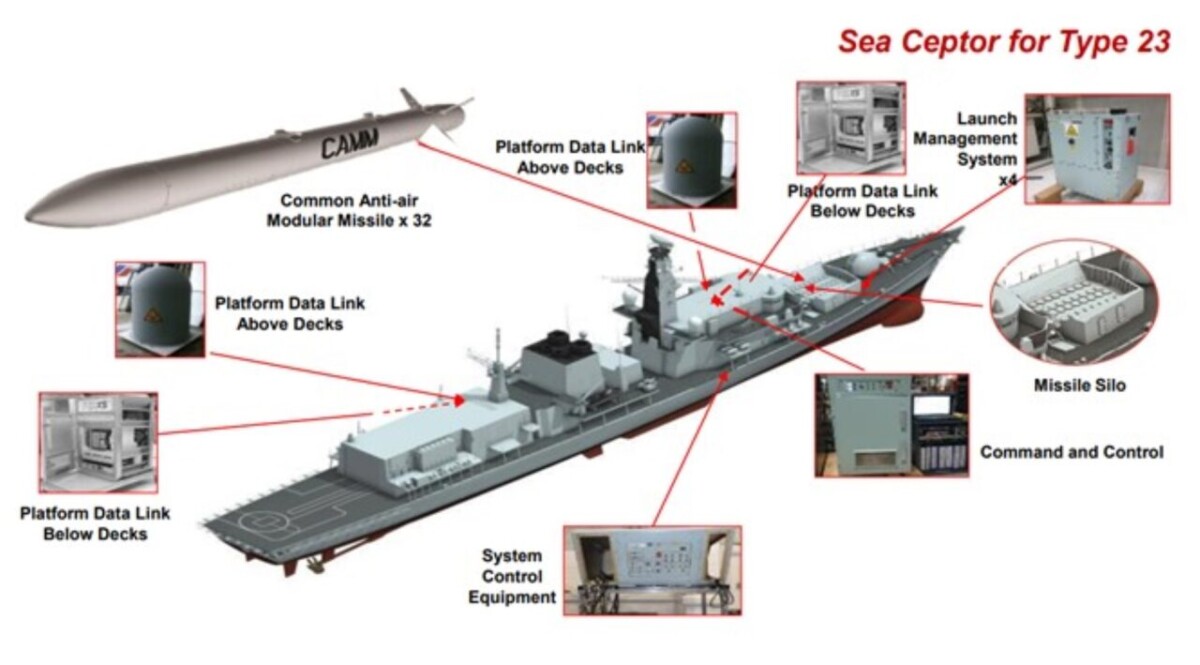
And will be used on Type 26 and Type 31 Frigates.
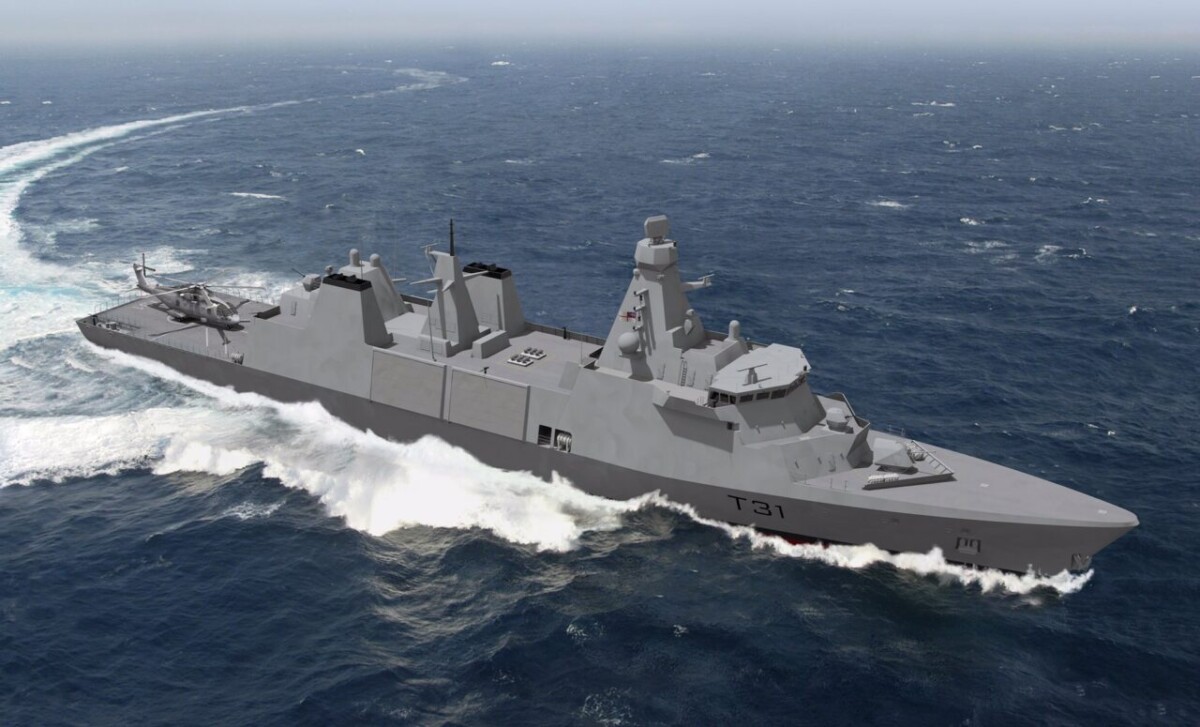
The FLAADS Command and Control system features 75% re-use from the Sea Viper command and control software. The FLAADS Platform Data Link provides a vital element of the system, able to provide information to the missile whilst in flight.
One of the key benefits of the missile having an active RF seeker is that it removes the need for a fire control radar, of critical importance against saturation attacks. It also offers the added benefit of reducing complexity, cost, and weight. It is this feature that is one of Sea Ceptor’s most attractive features in the export market.
It should be remembered that the FLAADS requirement specified the word area, CAMM is not a point defence weapon.
They are installed in Type 26, Type 23 and Type 31 in a bespoke low-cost launcher.
Land Ceptor and Sky Sabre
In UK service, the Sky Sabre medium-range Air Defence (MRAD) system consists of three vehicles;
Radar Targeting System Vehicle
Battle Management Command & Control Communications centre vehicle
Missile Launcher Vehicle (Land Ceptor)
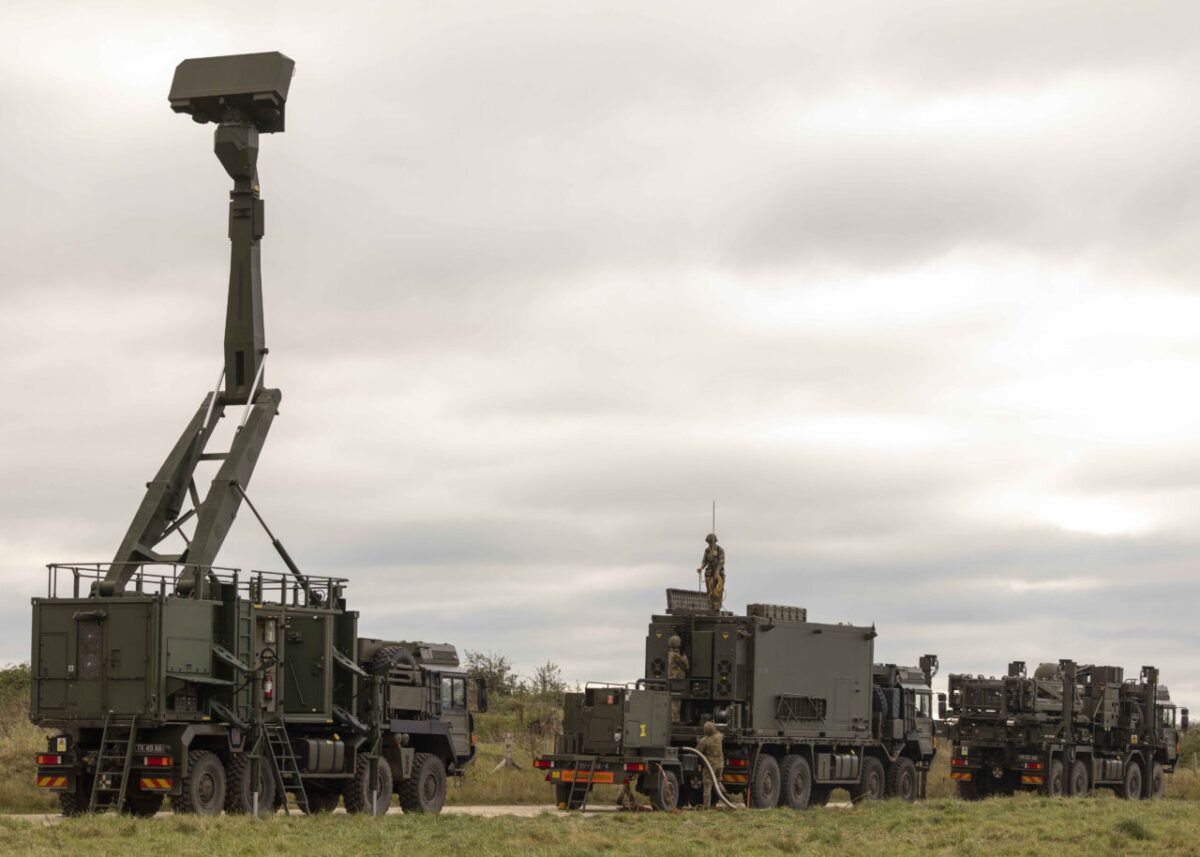
Although they are pictured together above, they can operate up to 15km apart.
All are MAN SV military trucks, and each component is demountable.
Radar Targeting System Vehicle
This uses a Saab Giragge Agile Multi-Beam Radar
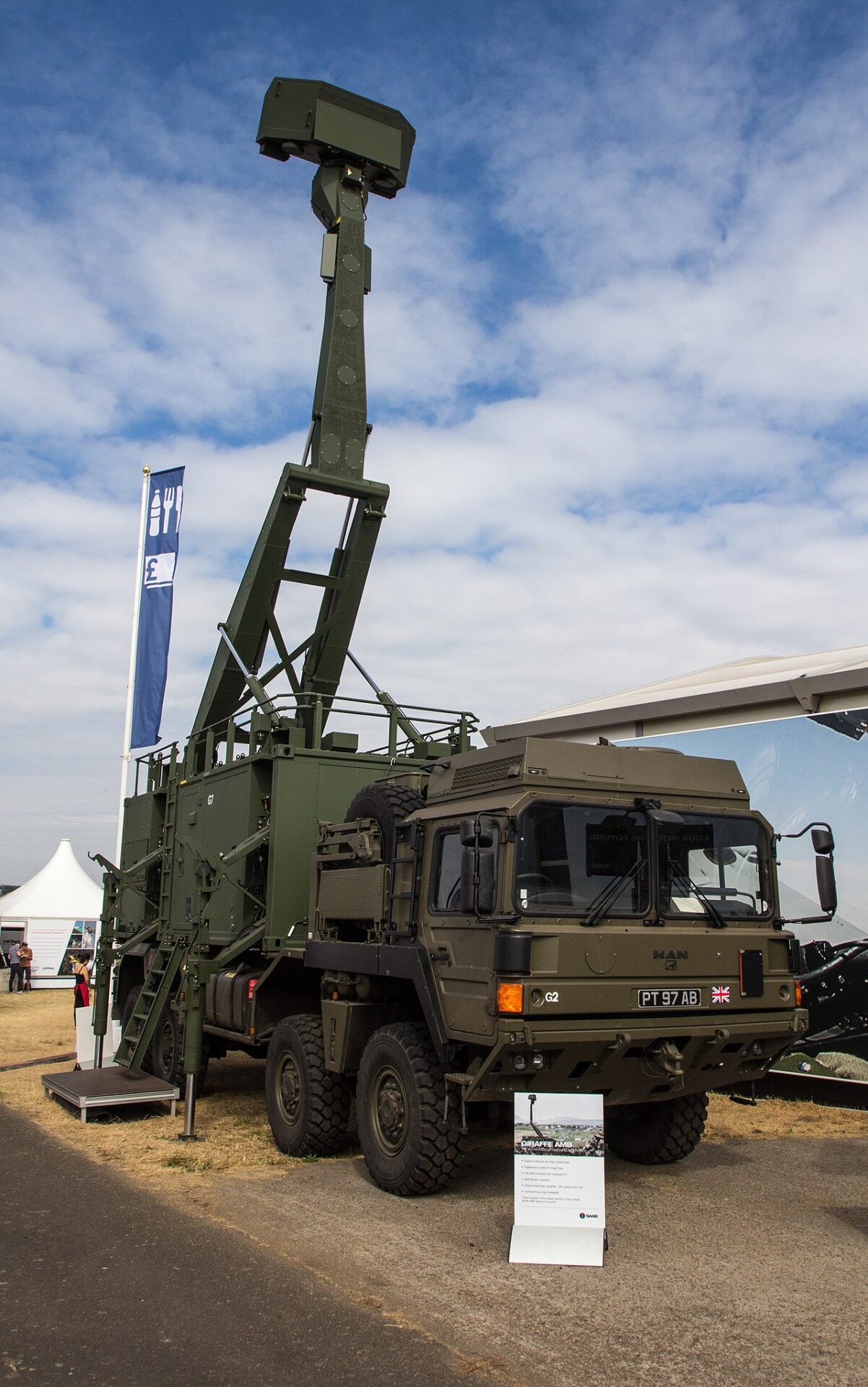
The British Army is the single biggest user of the Saab Giraffe
An interesting feature of the CAMM system in a land environment is that it does not require the radar system to be co-located, opening possibilities for concealing the launch point and attacking non-line-of-sight targets.
Linking the missile system into the Royal Artillery’s evolving Land Environment Air Picture (LEAAP) system which uses the Falcon trunk network, Saab Giraffe radars and Link 11/16 makes it a very hard target to locate and either suppress or destroy.
Missile Launcher Vehicle
The launcher arrangements have evolved considerably from this first concept…
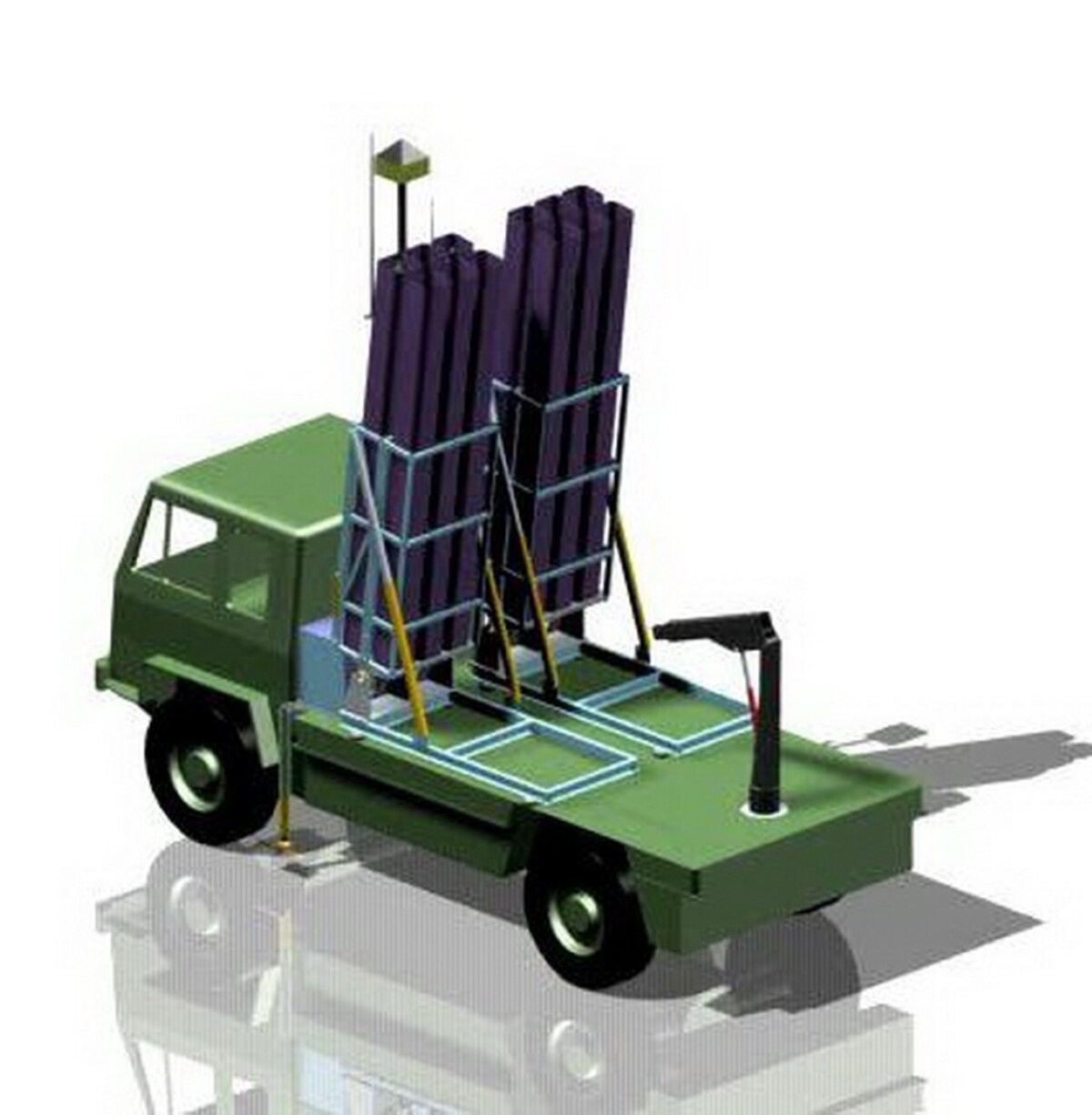
To the first physical iteration used for test and development…
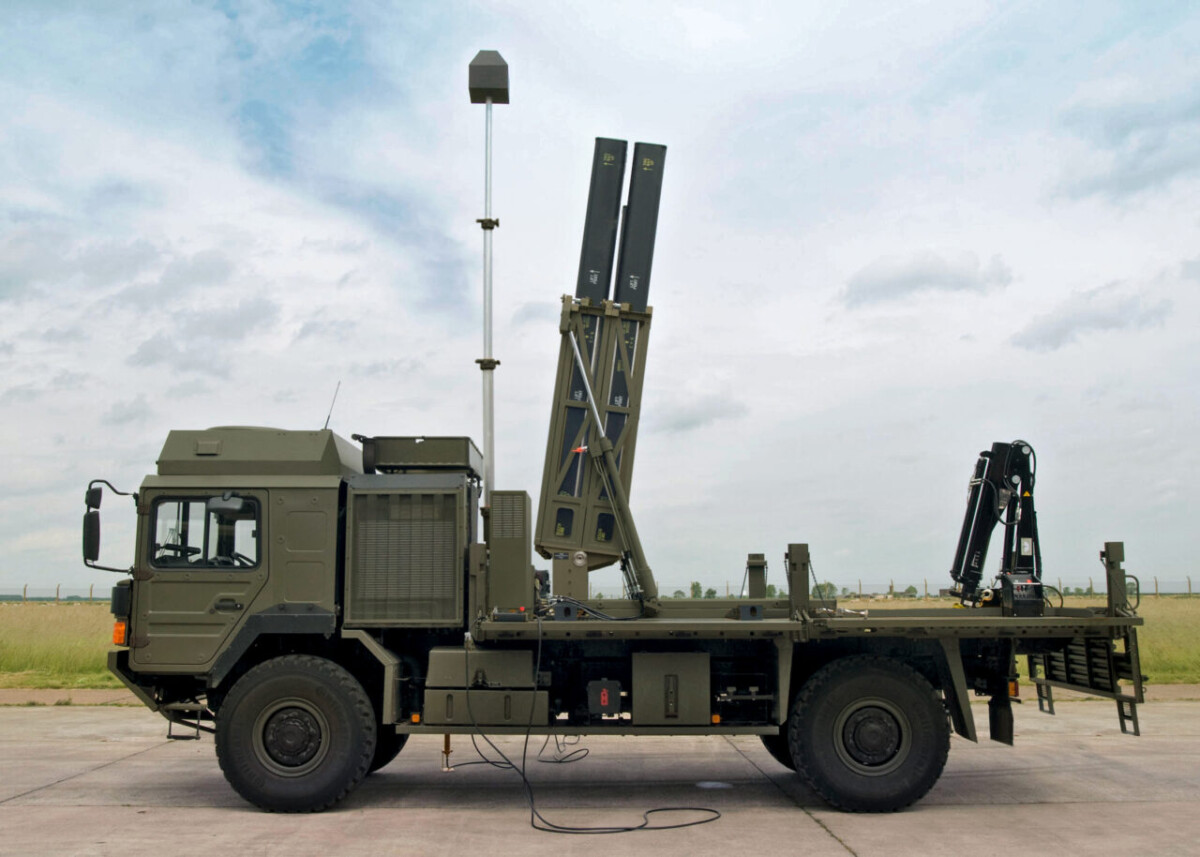
To the final in-service version
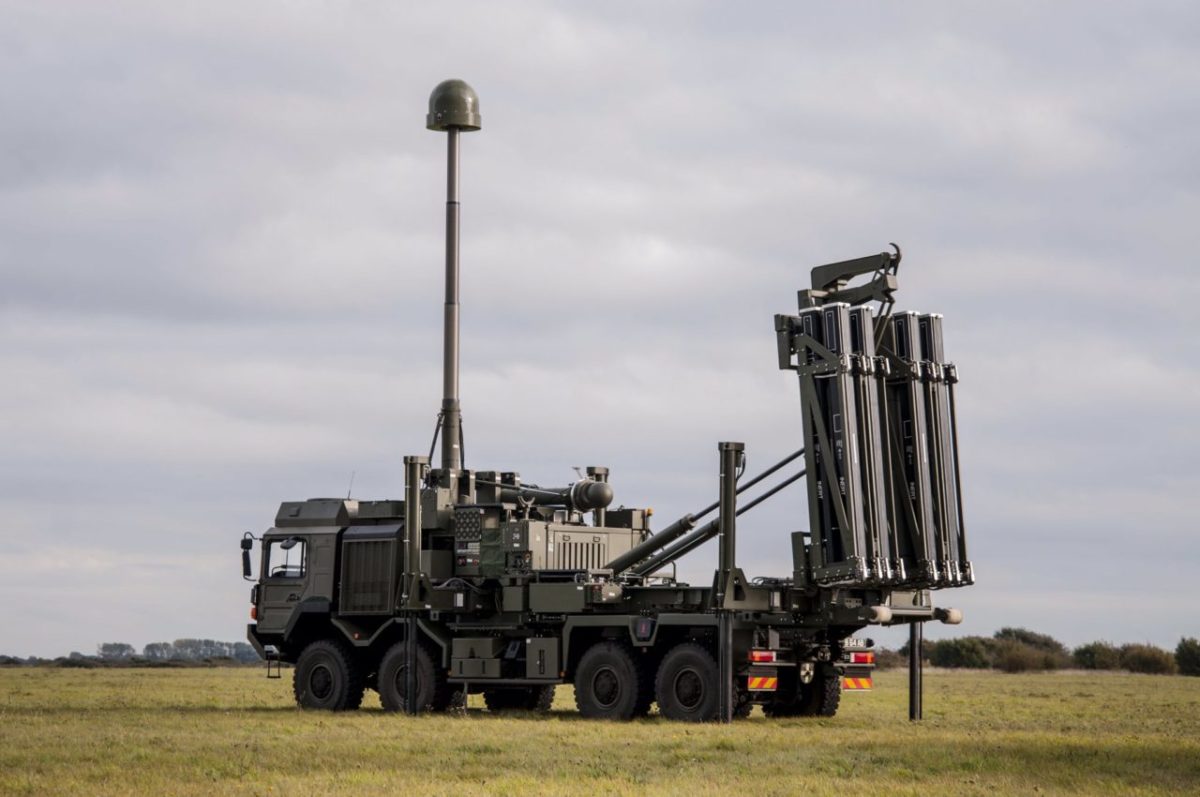
The launcher rack is an intelligent piece of engineering that can be used for either CAMM, CAMM-ER or other missiles.
It is fully demountable, operable either mounted or remounted.
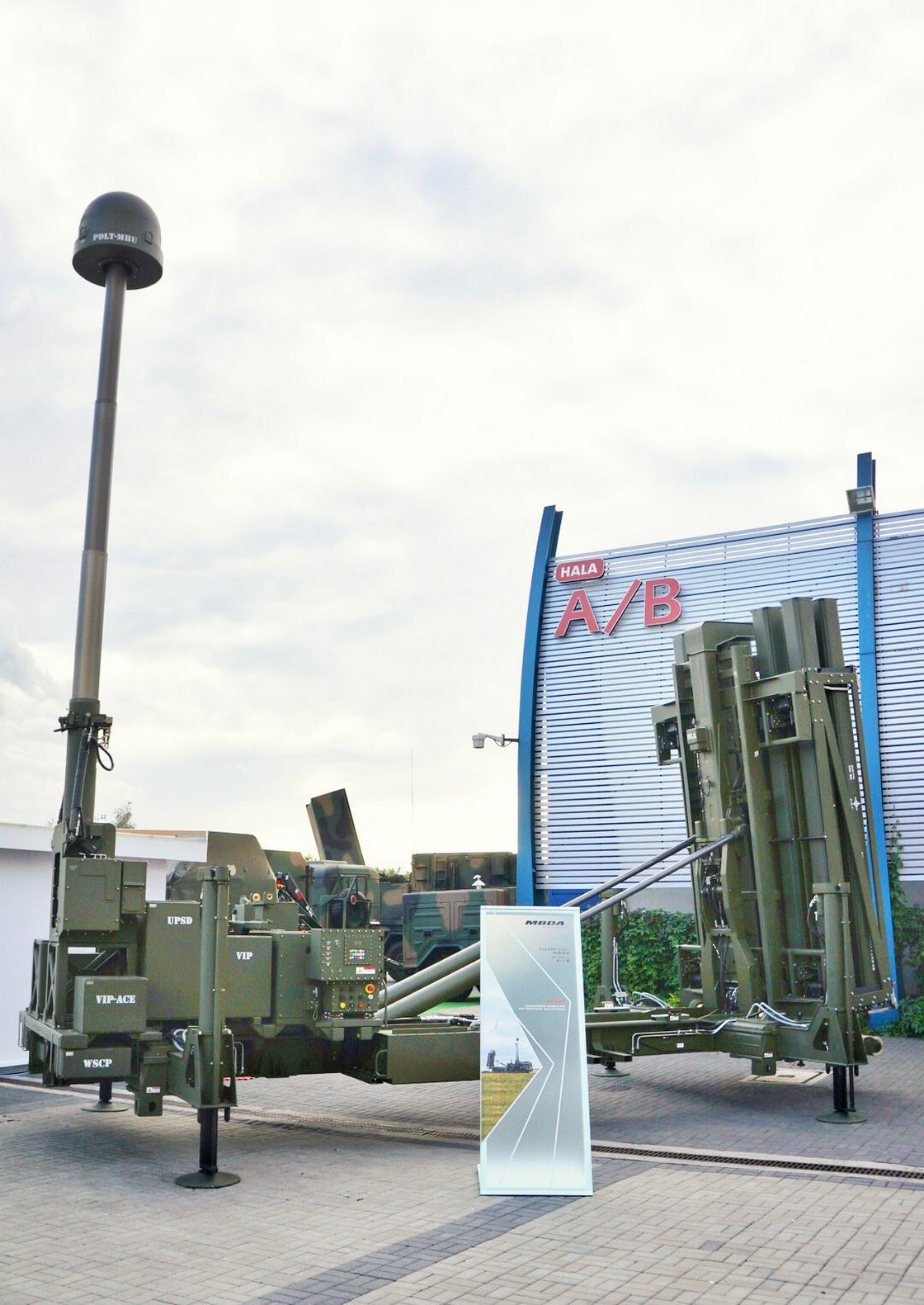
The Land Ceptor launcher rack is fitted with associated generators, data links and ancillary equipment such that it can operate remounted from the MAN SV truck.
It can self-load missile launch pods.
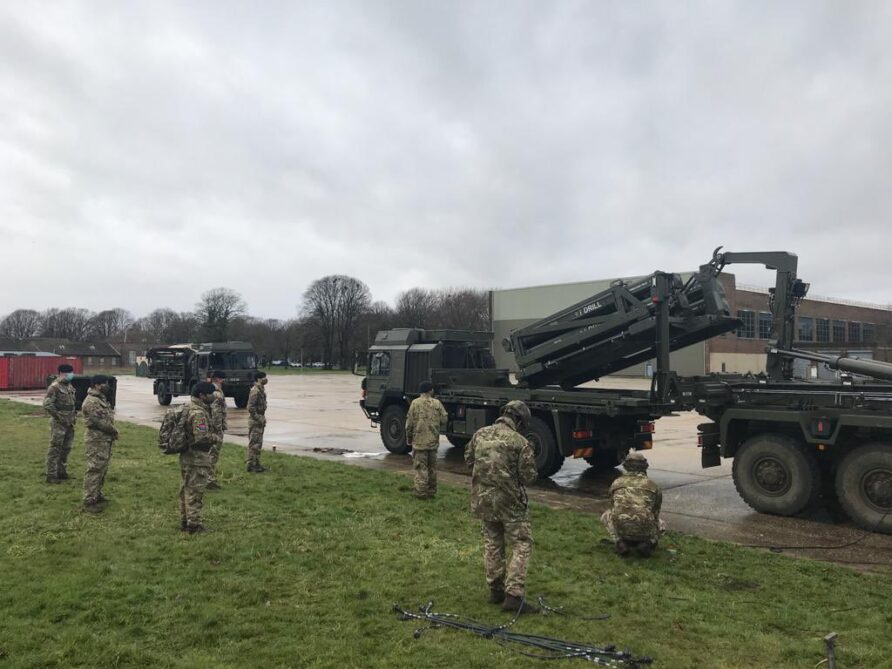
Other users will likely use their in-service vehicles, e.g. the Polish Jelcz shown below
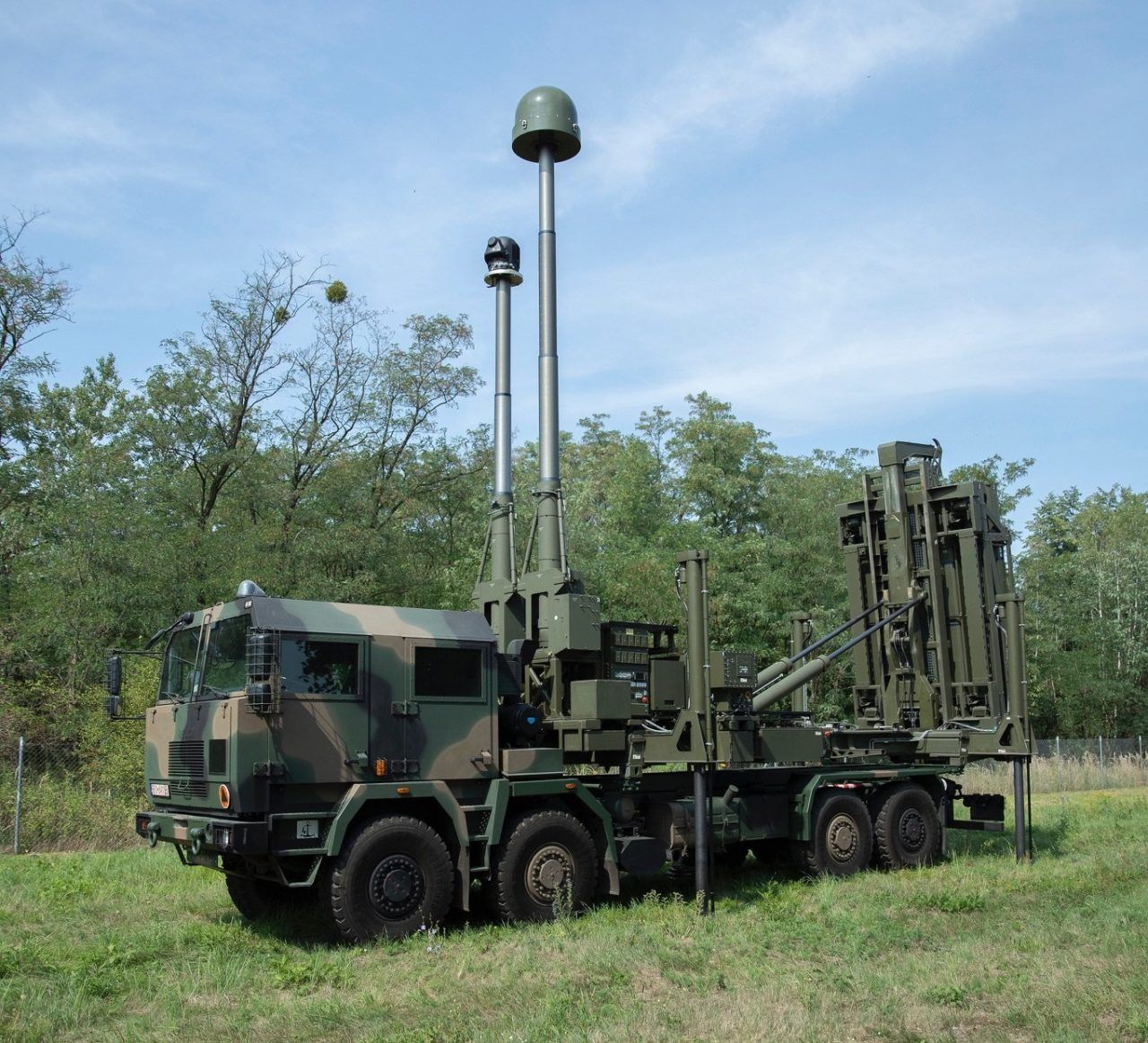
Battle Management Command & Control Communications
The command and control system is the Rafael Modular, Integrated C4I Air Defense System.
Rafael describes MIC4AD as;
MIC4AD is an advanced, unified, integrated C4I system that commands and controls the operation of both air and missile defense, including air-superiority missions. The system provides a total solution for multi-system, multi-layer and multi-range air and missile defense, traditionally operated as separate commands, correlates real-time data from distributed sensors/platforms (radars, IFF system, data links, electro-optics), all connected to the air traffic control picture and mission planning system. The data is analyzed to deliver a real-time, coherent national Air Situation Picture (ASP). Simultaneously, MIC4AD performs threat assessment and hostile target classification, generating an interception plan for threats at any command level (national, regional, tactical). MIC4AD optimizes resource management and swiftly allocates the most appropriate defense system, such as SPYDER, David’s Sling, Iron Dome or other customer systems to the type of challenge. Response includes target allocation to weapon systems (TAWA – Threat Assessment Weapon Allocation) with full, semi-automatic or manual fire control according to customer doctrine. MIC4AD’s open, modular architecture can be adapted to customer operational needs. The system can be integrated with a customer’s existing or future air and missile defense. This flexibility allows incorporating new technologies and systems with the existing arrangement. MIC4AD can serve as an add-on to the customer’s current C4I setup, or replace existing systems entirely. Highly automated, easy-to-use and with advanced interactive displays, MIC4AD is a true force-multiplier. Enabling unified command and fire control of multiple air and missile defense systems, MIC4AD delivers multi-mission, multi-layer and multi-range C4I capabilities that ensure end-to-end air and missile protection.
MIC4AD Console view below
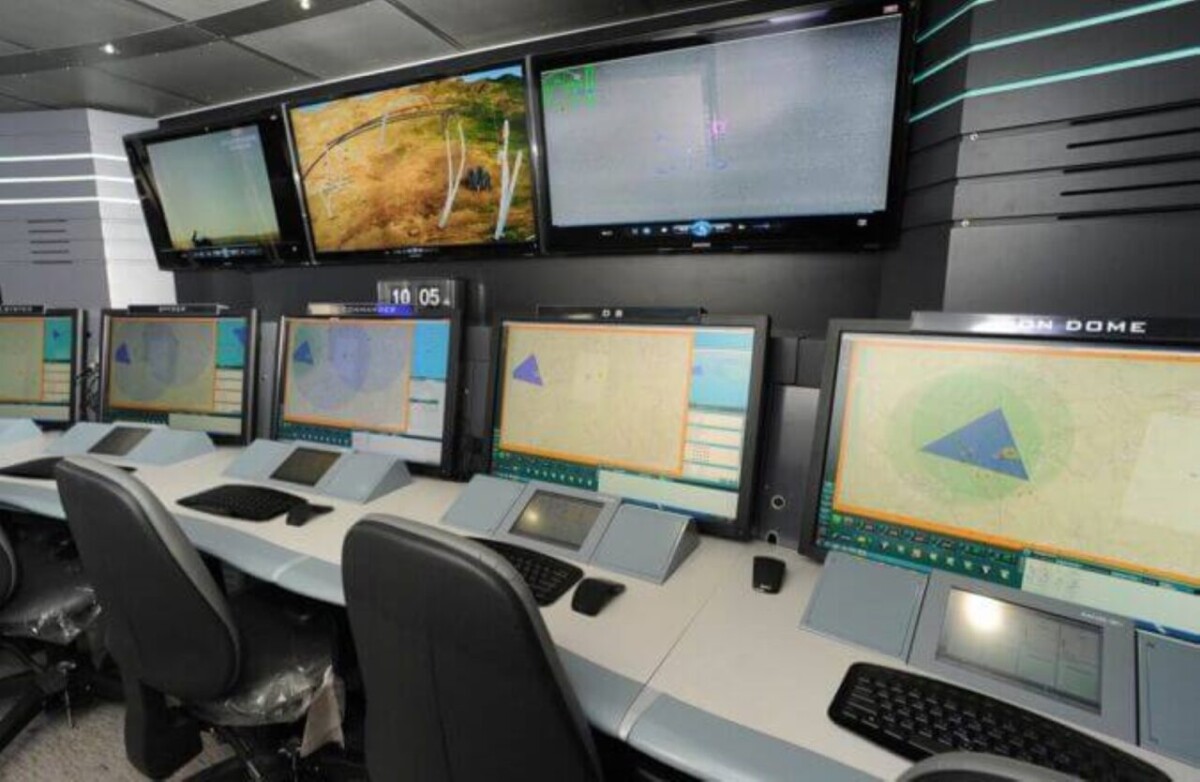
Rafael has partnered with Babcock for UK-specific implementation.
MBDA and Northrop Grumman have also integrated CAMM with the US Integrated Air and Missile Defense (IAMD) Battle Command System (IBCS), the first non-US missile to do so.
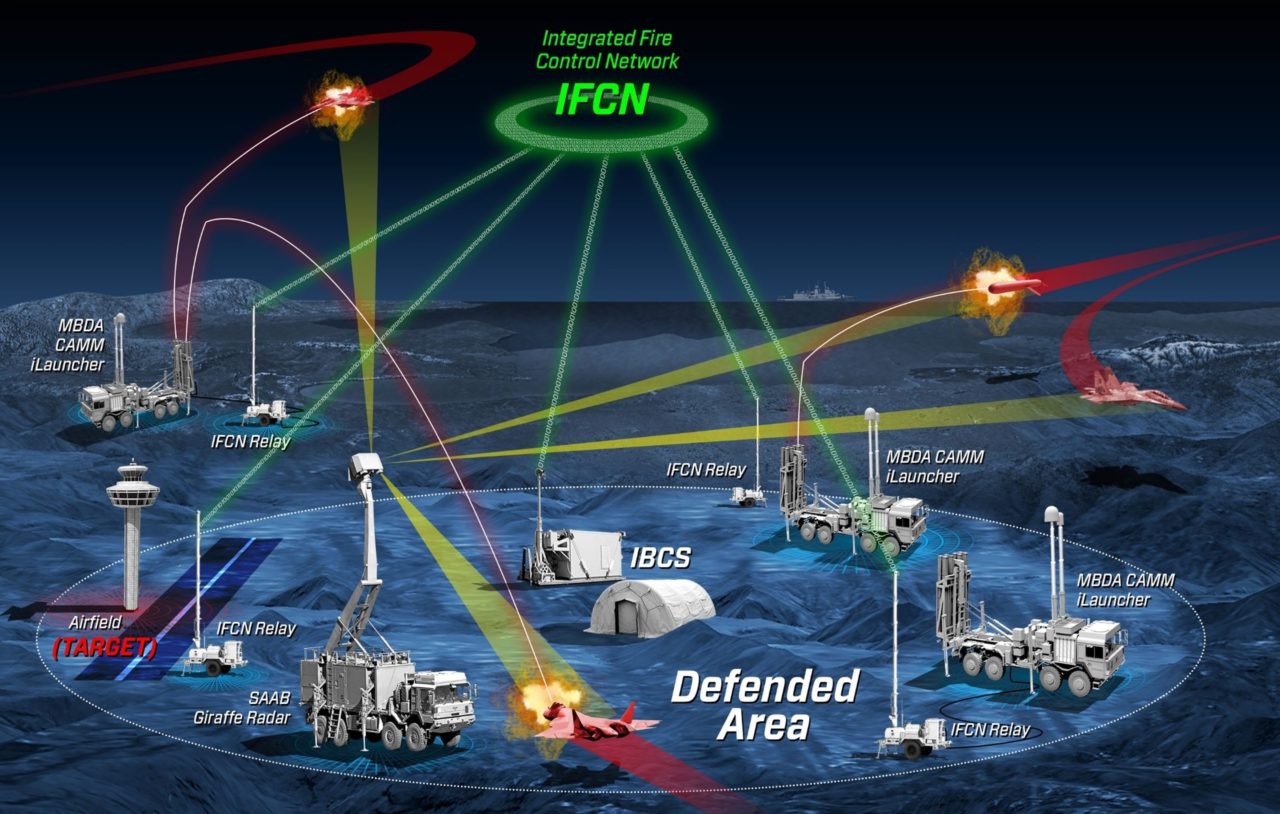
This may also be used by the UK in the future.
Click HERE to read about other UK Complex Weapons
Change Status
| Change Date | Change Record |
| 25/05/2016 | Initial issue |
| 30/07/2021 | Refresh and format update |
| 28/10/2022 | Refresh and update |
| 29/07/23 | Minor update |
| 25/10/2023 | Additional detail on CAMM-MR |
| 04/05/2024 | HMS Richmond use and Sweden selection |
Read more (Affiliate Link)
Discover more from Think Defence
Subscribe to get the latest posts sent to your email.

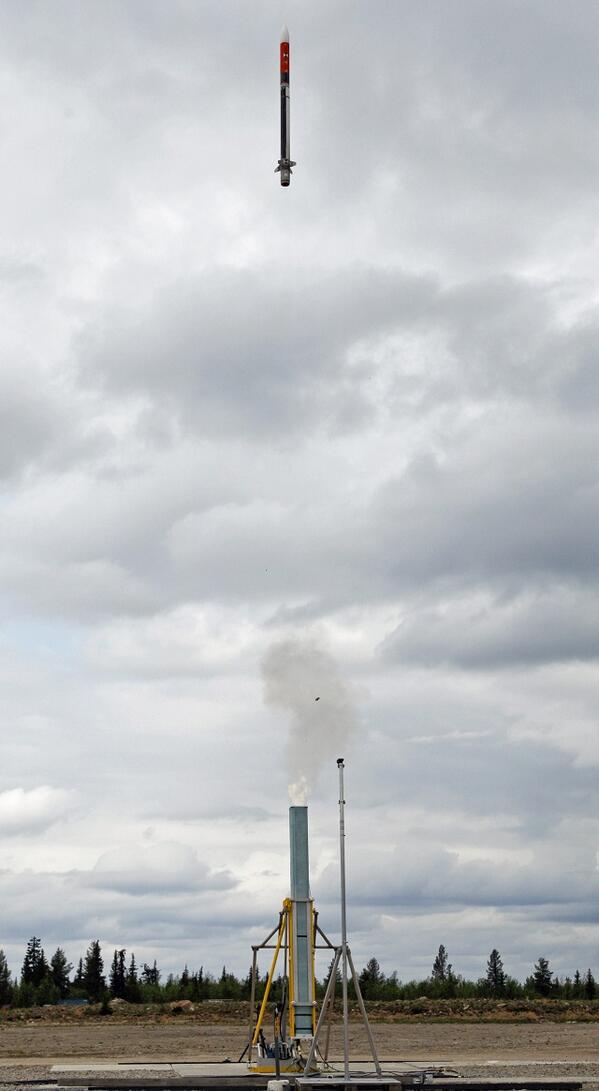
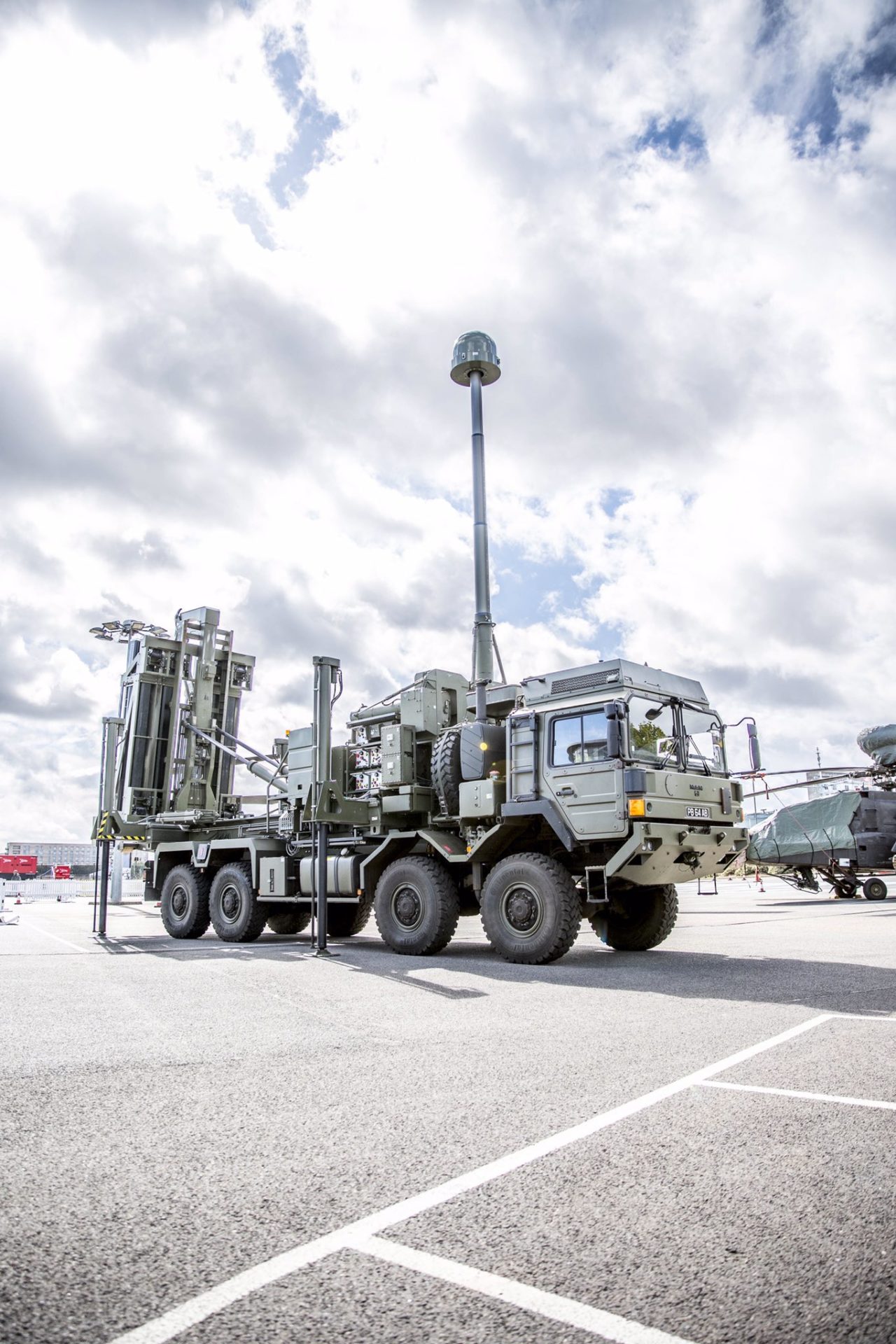

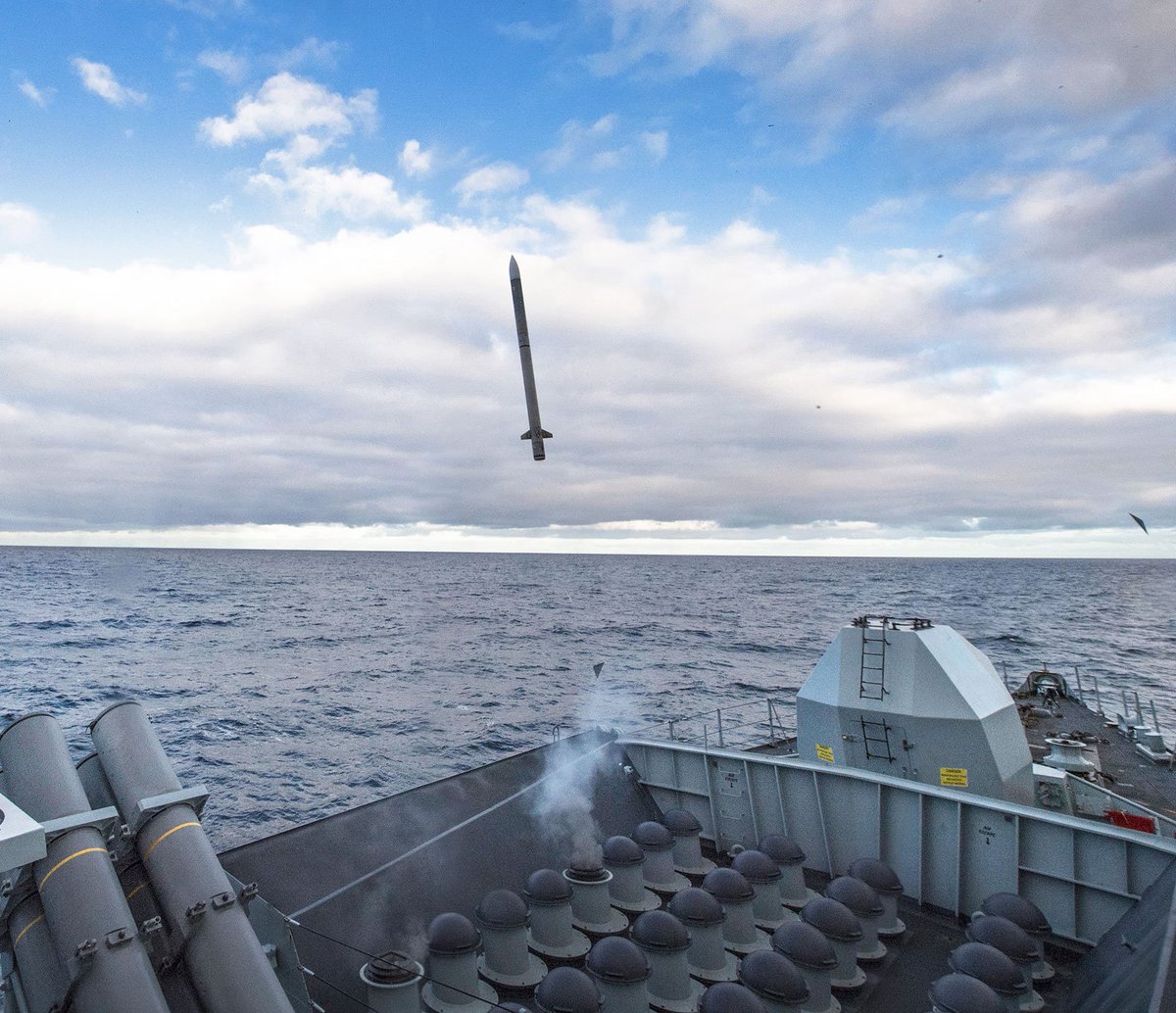

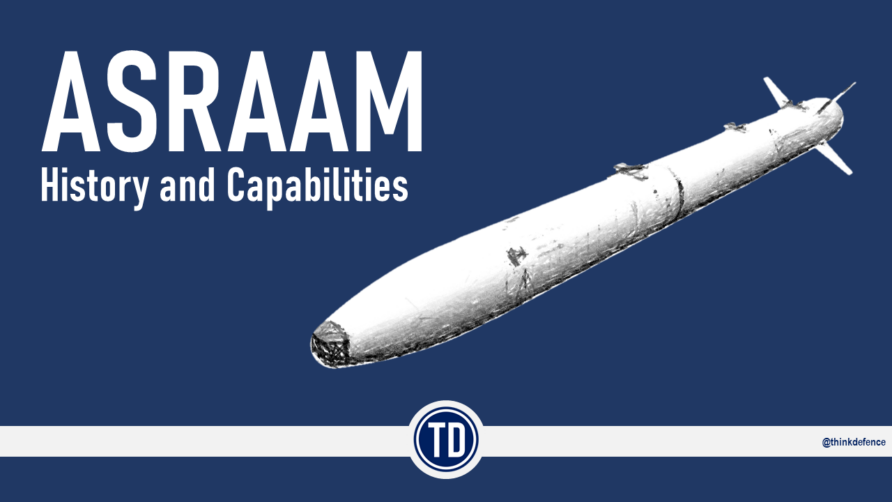
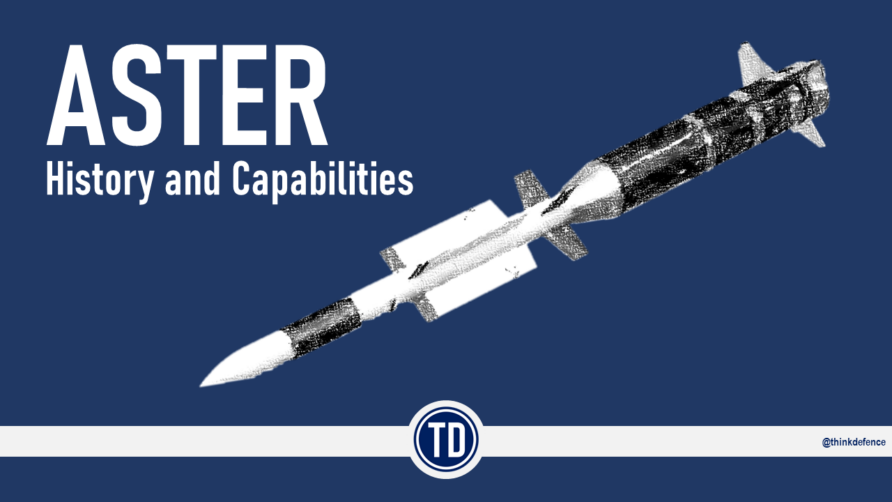
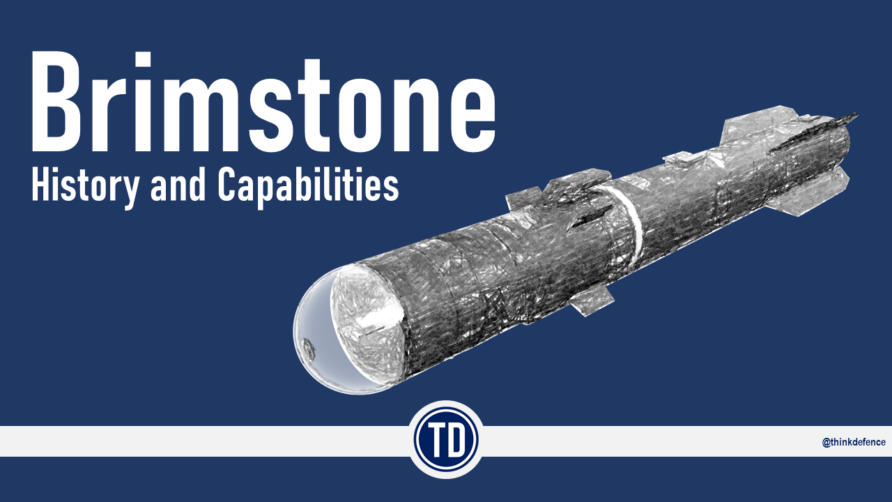
I don't think the bit about dedicated launchers is entirely correct – T31 will launch them from Mk41.
Think that decision was made after I posted this Matt but good spot, will refresh at next update
I don't think CAMM launched from Mk 41 VLS has been announced and I would be very surprised if it was.
The purpose of the Mk 41 is for anti-ship and land attack missiles i.e. FC/ASW. I see little point in taking away FC/ASW tubes to provide CAMM launchers who already have their own covered in the existing contracts.
IOW, why spend millions on Mk41/ExLs to provide a duplicate launch capability already provided by the mushrooms?